When William Wallace was executed, he was hanged, drawn, and quartered, a punishment reserved for only the worst “traitors”.
Scotland’s Fiercest Freedom Fighter
Before he was a legend, William Wallace was a man with nothing to lose—and everything to fight for. In a time when Scotland was buckling under English rule, Wallace exploded onto the scene with blood, fire, and an unshakable cry for freedom. He didn’t just battle an empire—he ignited a movement that reshaped history. From guerrilla warfare to gruesome martyrdom, Wallace’s life reads like a myth… because much of it became one. But behind every legend is a real story—and we're about to uncover the man beneath the war paint.
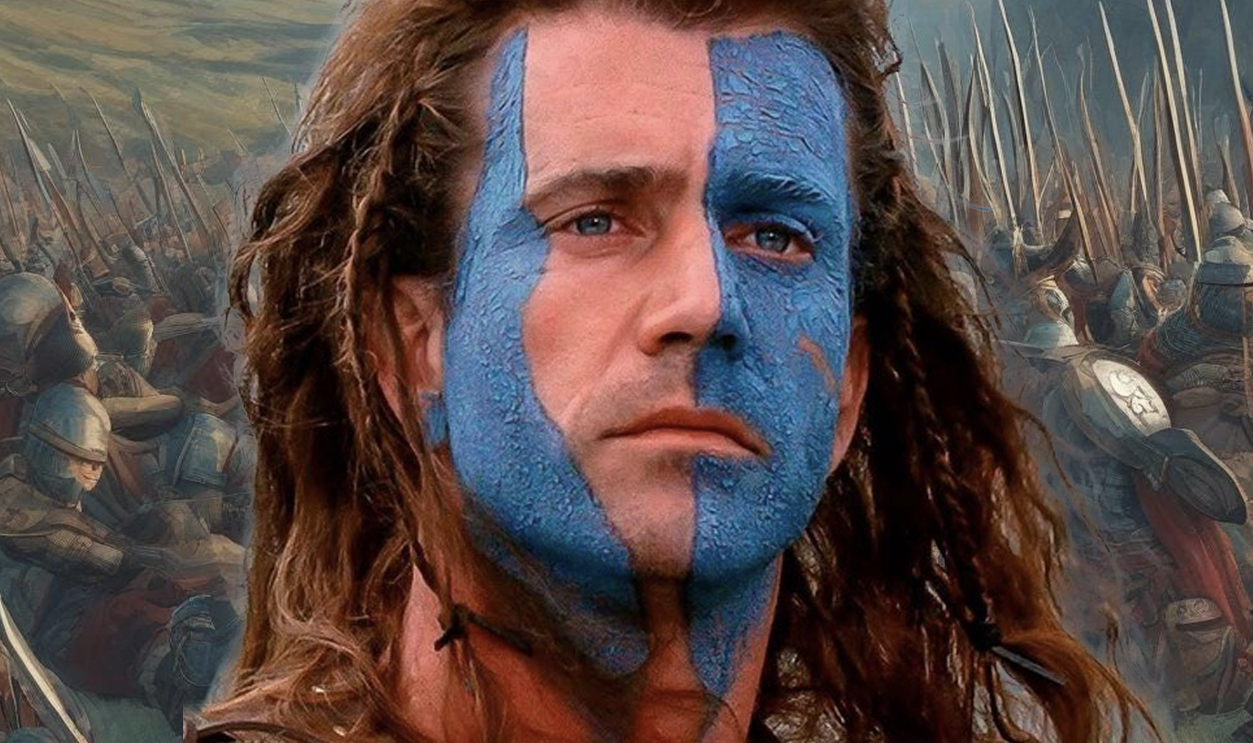
1. He Wasn’t Necessarily A Nobleman
William Wallace’s origins remain unclear and hotly debated. He wasn’t necessarily a nobleman—at least not in the way Hollywood likes to pretend. Wallace came from the lesser Scottish gentry, possibly even a commoner with just enough status to get an education. He wasn’t born into grand castles or royal courts, but he knew Latin, which set him apart. Wallace’s rise wasn’t about birthright but boldness, brains, and battlefield grit. The man didn’t inherit power—he took it.
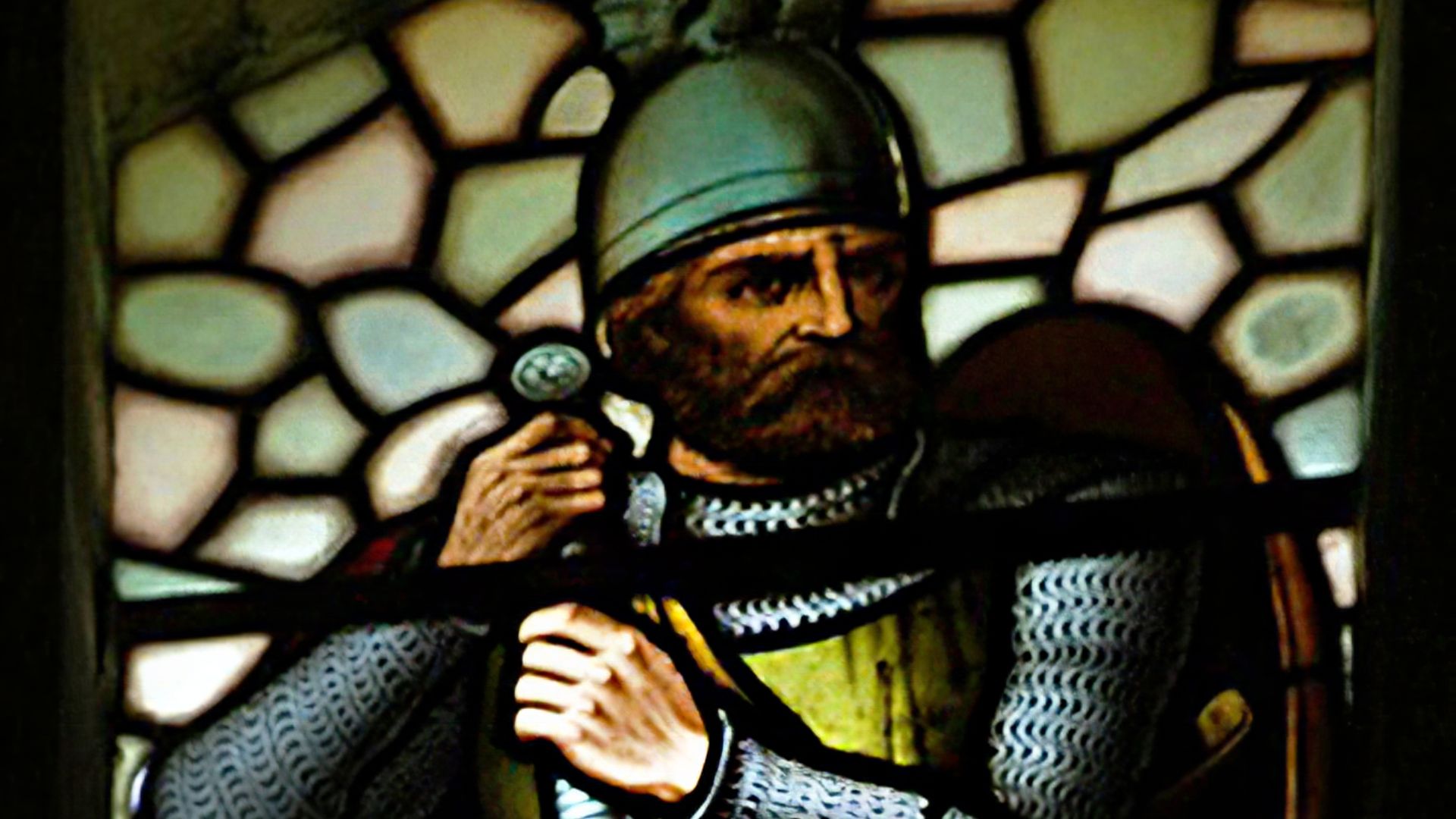 Otter, Wikimedia Commons
Otter, Wikimedia Commons
2. His Early Life Is A Mystery
Wallace was born sometime in the early 1270s—historians guess between 1270 and 1272, maybe in Elderslie, maybe Ayrshire. The records are a mess. What is clear? He entered a world already on fire, and that chaos didn’t just shape him—it forged him. And soon, he’d strike back.
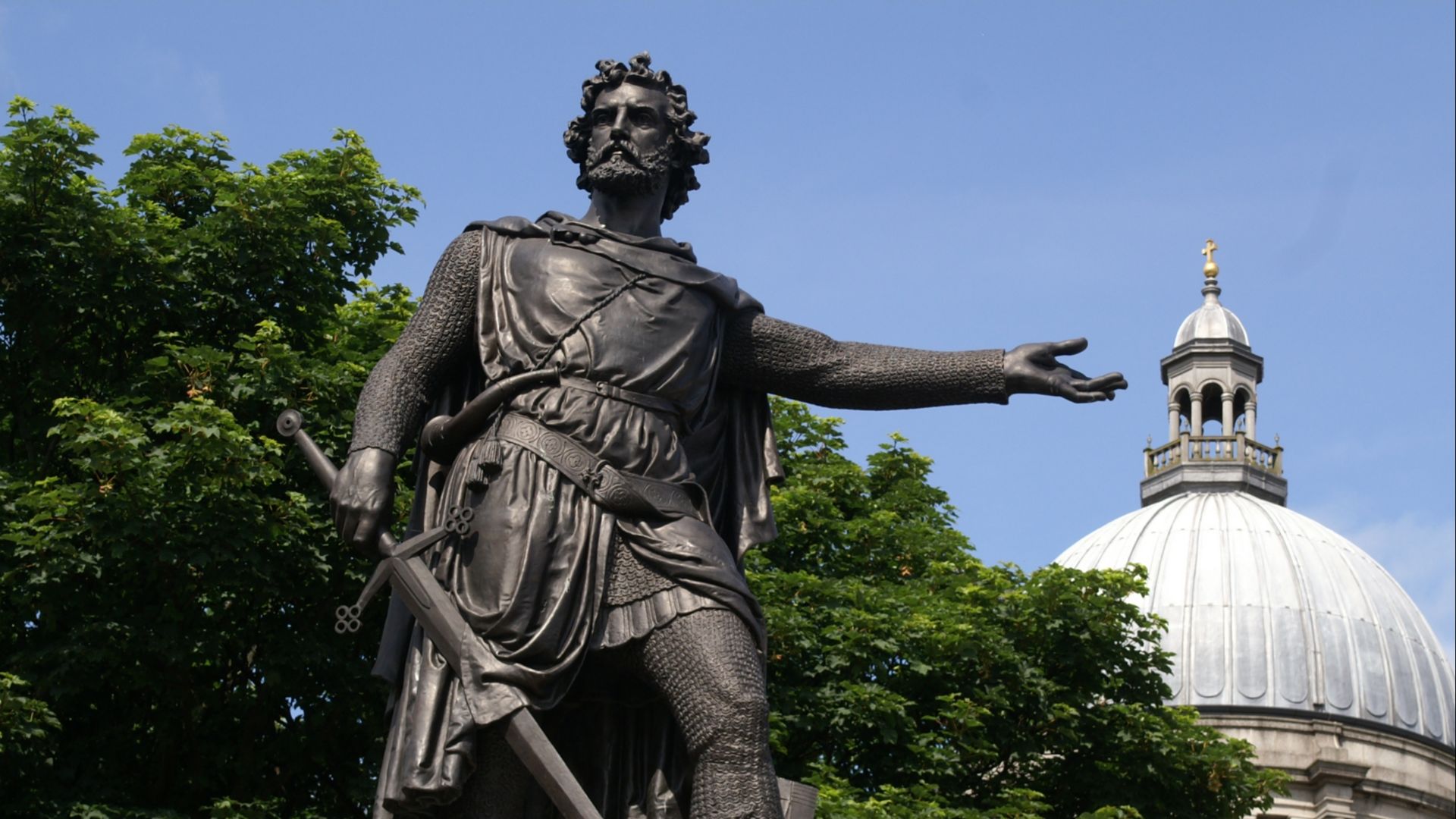 Axis12002 at English Wikipedia, Wikimedia Commons
Axis12002 at English Wikipedia, Wikimedia Commons
3. He Lost His King
In 1286, tragedy struck when King Alexander III died in a freak accident—his horse fell off a cliff during a storm. His only surviving heir was his 3-year-old granddaughter, Margaret, the Maid of Norway. When she died en route to Scotland in 1290, the throne was suddenly up for grabs. With no clear successor, thirteen nobles laid claim, plunging the kingdom into chaos—and making it ripe for outside interference.
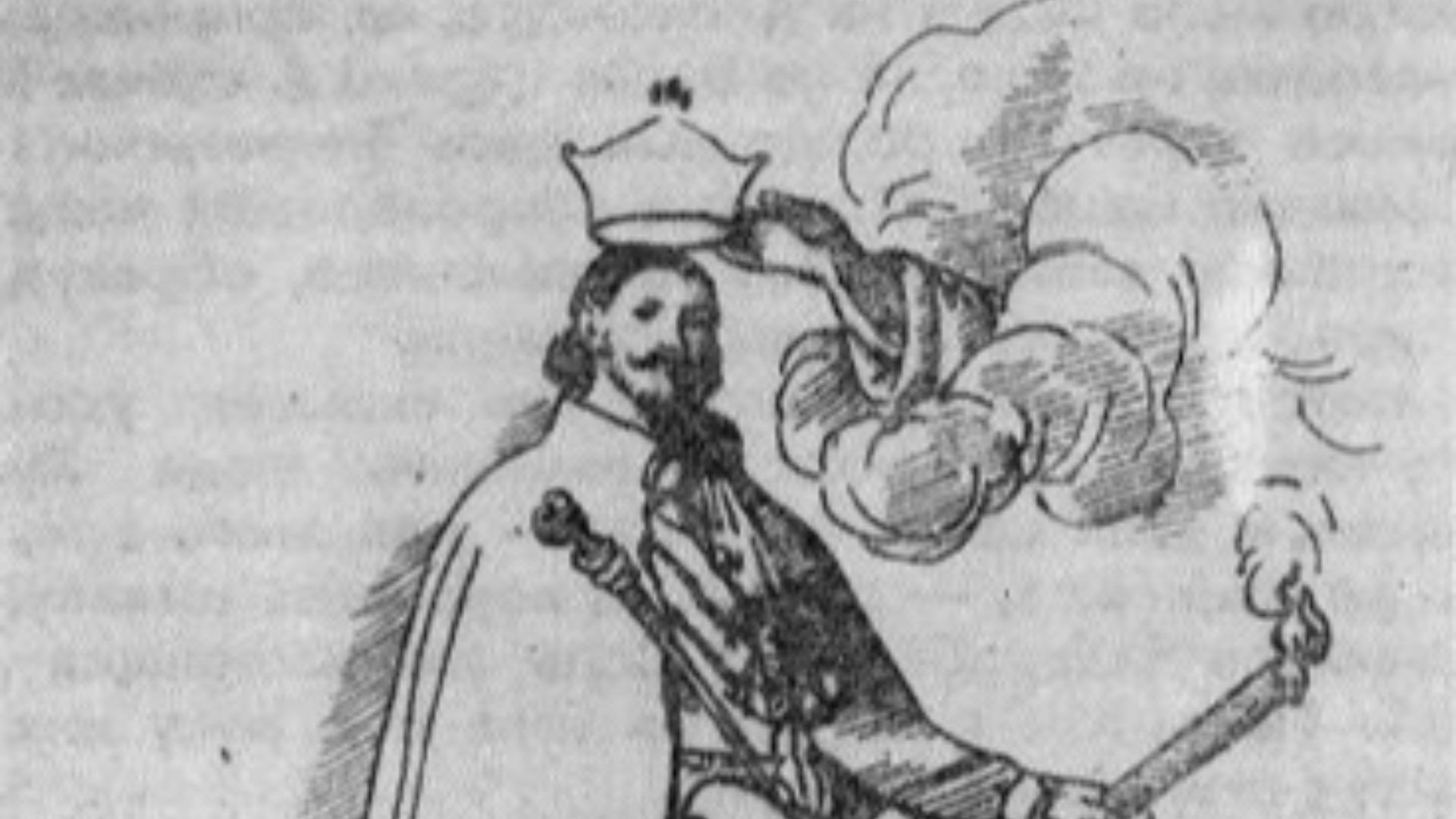
4. The King Of England Smelled Opportunity
With Scotland leaderless, the nobles asked Edward I of England to mediate the succession crisis. Edward agreed—but only if Scotland acknowledged him as overlord. Desperate to avoid civil war, many nobles caved. That decision gave Edward a foothold in Scottish politics—and he took full advantage. He wasn’t just settling a dispute but setting the stage for domination. The Scots didn’t know it yet, but they’d handed Edward the keys to their kingdom.
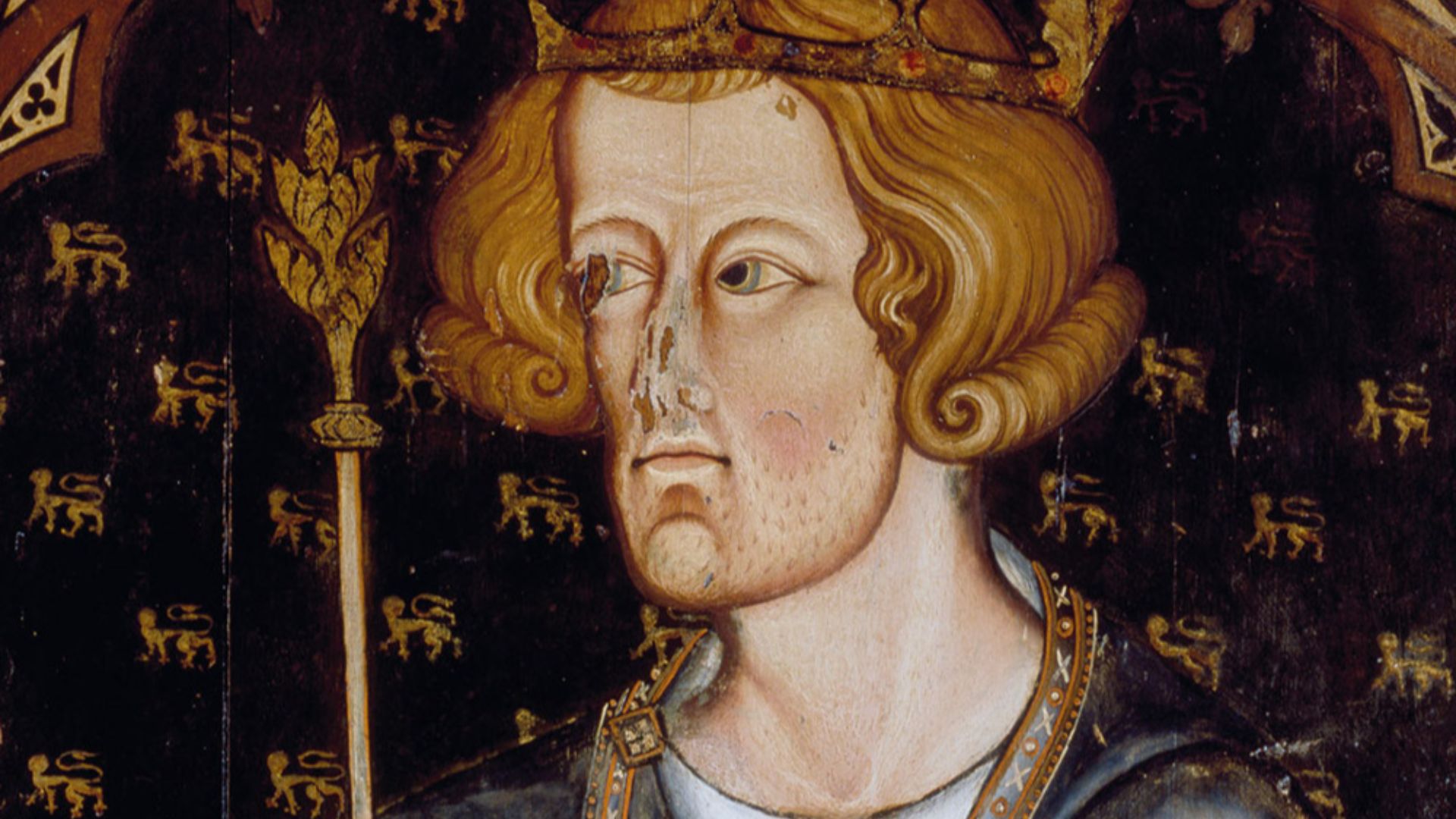 Unknown authorUnknown author, Wikimedia Commons
Unknown authorUnknown author, Wikimedia Commons
5. Scotland Became A Puppet Kingdom
Edward selected John Balliol as king in 1292, but it wasn’t a gift—it was a leash. Balliol had the crown, but Edward called the shots. He demanded fealty, summoned Balliol to English courts, and overruled his decisions. Edward reduced the once-proud kingdom to a glorified province, and the Scots began calling Balliol “Toom Tabard”—meaning "empty coat"—for his lack of real power. Scottish independence hadn’t just slipped away—it was being erased piece by piece, with English boots on Scottish soil.
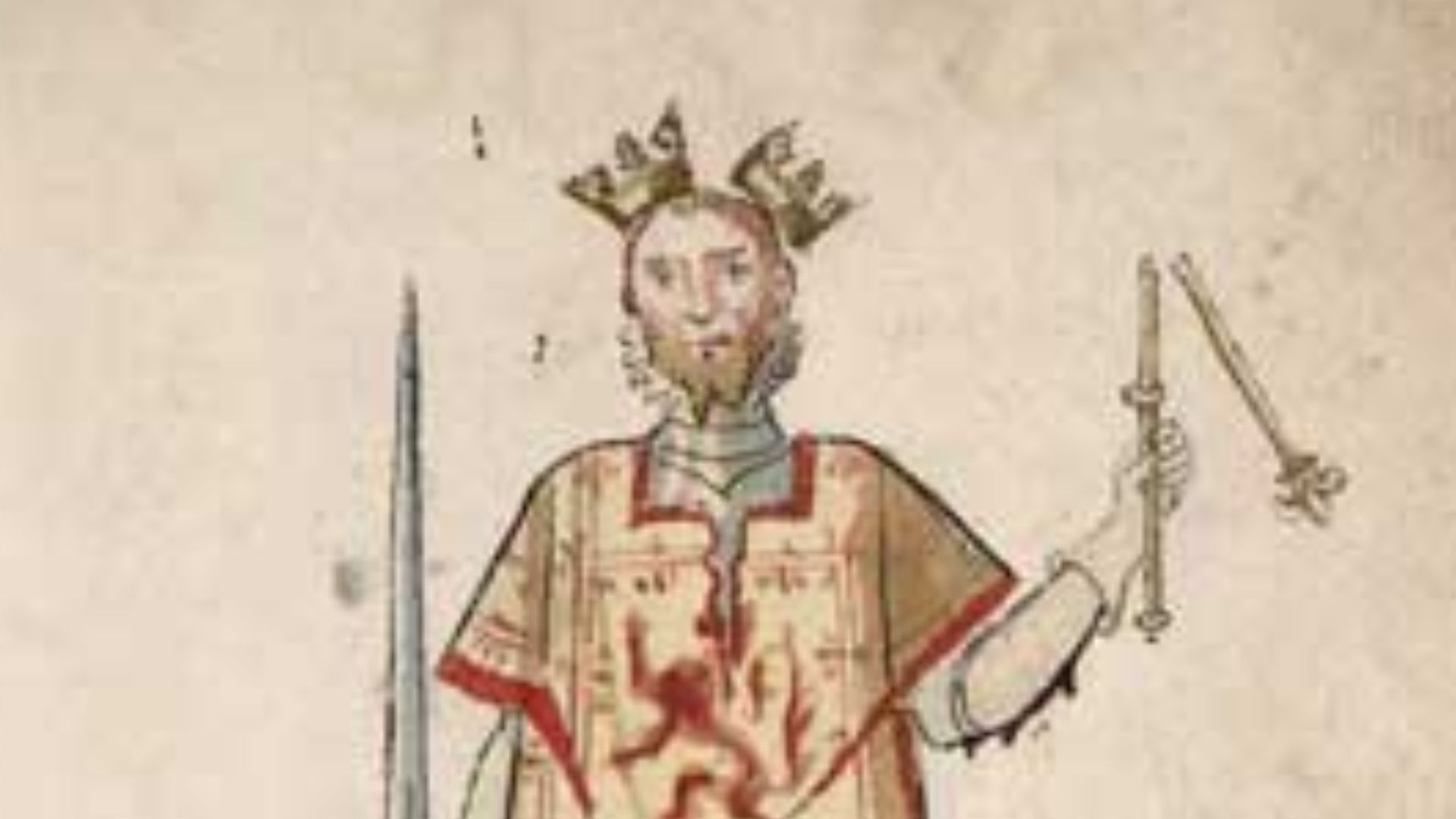 Forman Armorial (produced for Mary, Queen of Scots), Wikimedia Commons
Forman Armorial (produced for Mary, Queen of Scots), Wikimedia Commons
6. The People Resented—And Resisted
Edward’s heavy-handed rule didn’t sit well with the Scots. English officials collected taxes, enforced harsh laws, and occupied key strongholds. The nobility grumbled. The people suffered. Resentment simmered across villages and castles alike. Some tried to resist quietly through minor sabotage and whispered rebellion. Others bided their time, waiting for someone bold enough to strike back. Scotland wasn’t at peace—it was holding its breath, teetering on the edge of revolt.
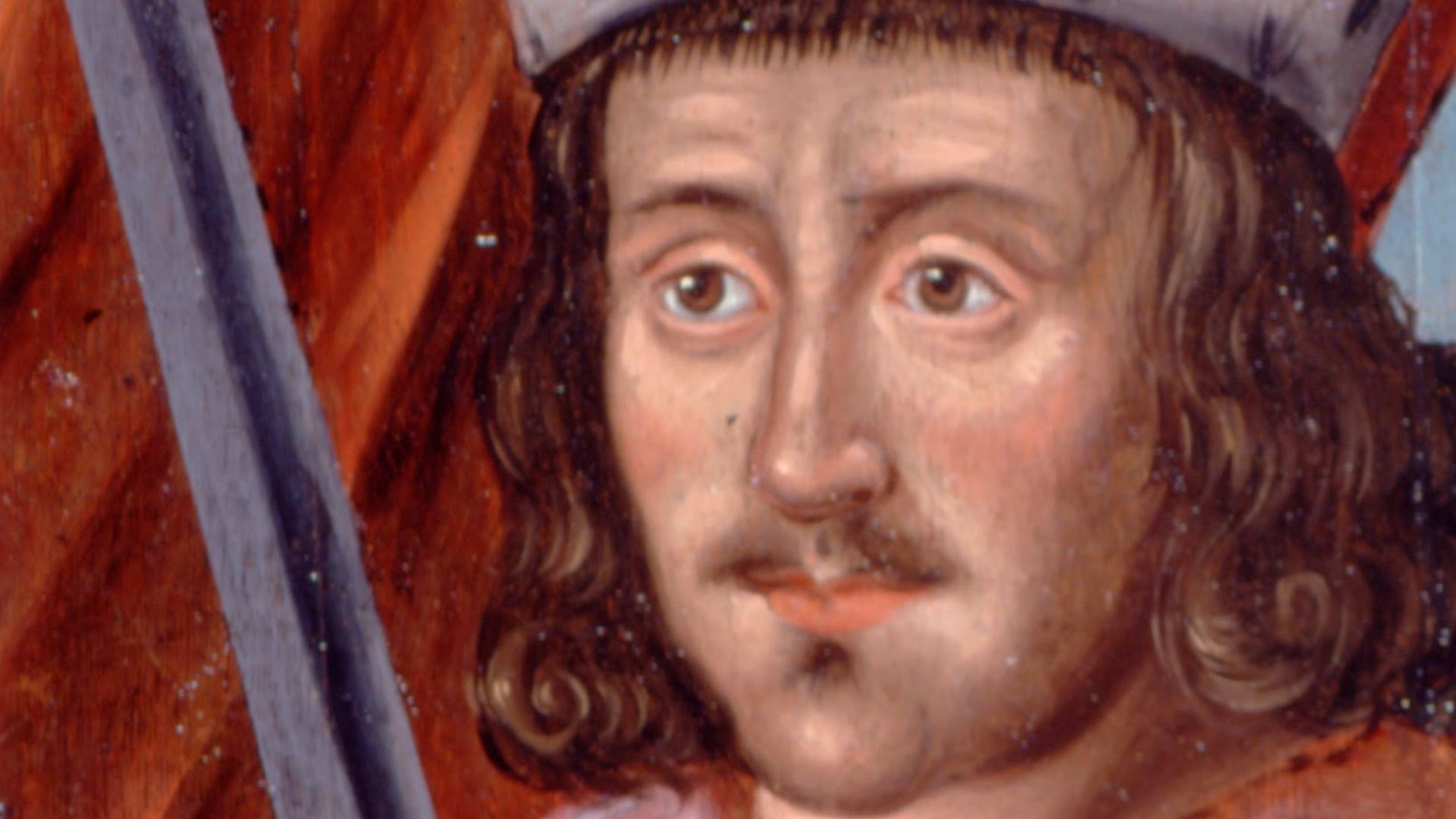 British – School Details on Google Art Project, Wikimedia Commons
British – School Details on Google Art Project, Wikimedia Commons
7. They Lit The Fuse
Fed up with Edward’s control, the Scottish nobles finally snapped. In 1295, they formed the Auld Alliance with France—a direct slap in Edward’s face. England responded with fury. In 1296, Edward launched a brutal invasion, capturing Berwick and slaughtering thousands. He forced John Balliol to abdicate the throne, looted the Scottish crown jewels, and hauled off the Stone of Destiny. Scotland was leaderless, humiliated, and occupied. But in the ashes of defeat, the rebellion was about to ignite.
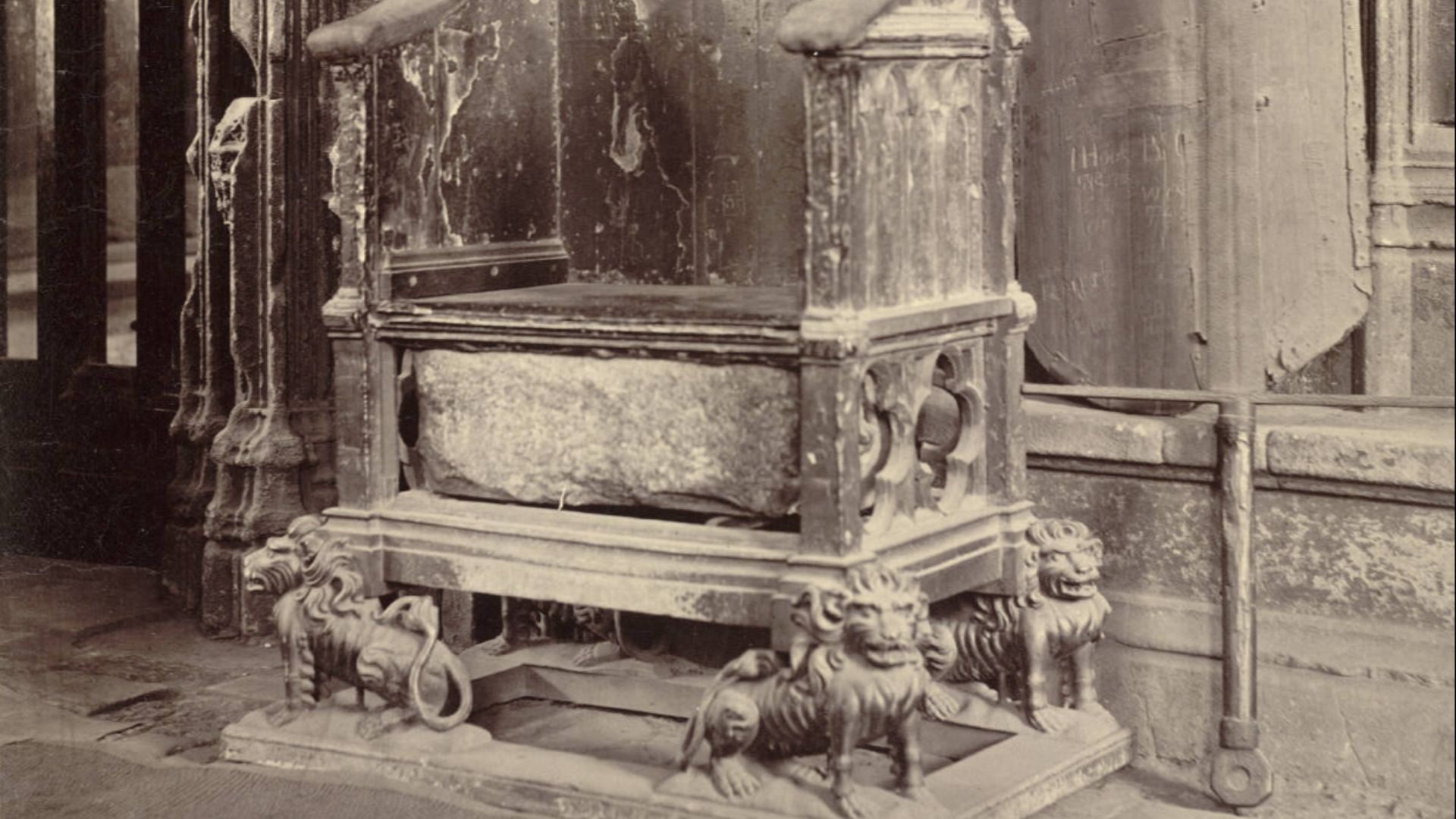 Cornell University Library, Wikimedia Commons
Cornell University Library, Wikimedia Commons
8. Wallace Entered The Fight
In 1297, William Wallace emerged from the shadows of occupation and struck back. After years of watching his homeland buckle under English rule, Wallace led a surprise attack on the sheriff of Lanark, marking the start of open rebellion. His bold strike electrified the Scots, whether driven by patriotism or personal vengeance. No royal blood. No official title. Just fury, strategy, and a sword. Wallace wasn’t following orders—making history on his terms.
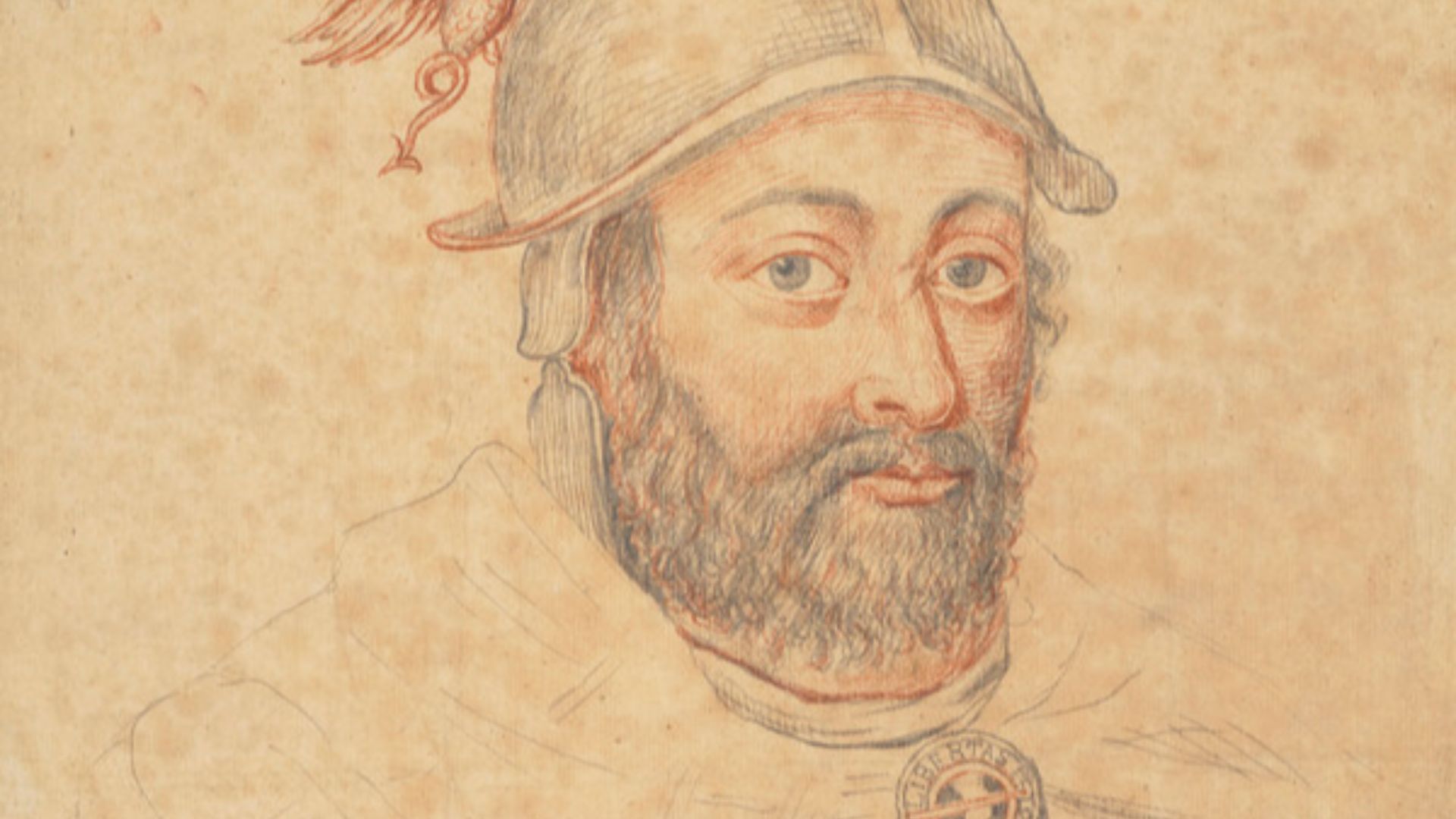 11th Earl of Buchan, David Stuart Erskine,, Wikimedia Commons
11th Earl of Buchan, David Stuart Erskine,, Wikimedia Commons
9. Scotland Rose With Him
Wallace’s attack at Lanark wasn’t an isolated outburst but a spark that lit the nation. As news of his defiance spread, ordinary Scots rallied to his cause. Farmers, laborers, and minor nobles joined the rebellion, tired of English taxes, violence, and control. Wallace wasn’t a king or a noble general—he was one of them. His boldness gave Scotland something it hadn’t had in years: a leader willing to fight back, no matter the odds.
 Braveheart: William Wallace Freedom Speech [Full HD], Speeches HD
Braveheart: William Wallace Freedom Speech [Full HD], Speeches HD
10. He Wasn't The Only One
Wallace wasn't the only one putting up a fight. Sir Andrew Moray shared Wallace's passion against Edward I. The Moray's of Petty were a powerful and influential family who owned vast lands and castles in northeastern Scotland, and they actively fought against English rule. Unfortunately, Sir Andrew Moray and his son, also named Andrew, were captured in battle. While the senior Moray didn't make it, the younger Andrew managed to escape and continue his father's legacy—eventually crossing paths with Wallace.
 Braveheart Trailer, austinmillbarge22
Braveheart Trailer, austinmillbarge22
11. He Joined Forces With Moray
Two rebels, one goal. As William Wallace’s rebellion spread in the South, Andrew Moray led a fierce uprising in the North. In 1297, the two freedom fighters united, creating a powerful, coordinated resistance against English occupation. Their partnership wasn’t about titles or politics but shared fury and strategy. Together, they built an army of farmers and fighters, ready to take on a vastly superior foe. Their first big test? Stirling Bridge.
 Braveheart (1995) Trailer #1 | Movieclips Classic Trailers, Rotten Tomatoes Classic Trailers
Braveheart (1995) Trailer #1 | Movieclips Classic Trailers, Rotten Tomatoes Classic Trailers
12. Stirling Bridge Turns The Tide
On September 11, 1297, Wallace and Moray faced a massive English army at Stirling Bridge—and rewrote the rules of war. While the English began crossing the narrow bridge, the Scots waited. Then, in a sudden assault, they trapped and slaughtered the soldiers who’d crossed, cutting them off from reinforcements. It was brutal. Brilliant. Devastating. Against all odds, the underdogs crushed one of the most powerful armies in Europe. Scotland didn’t just win—it roared back to life.
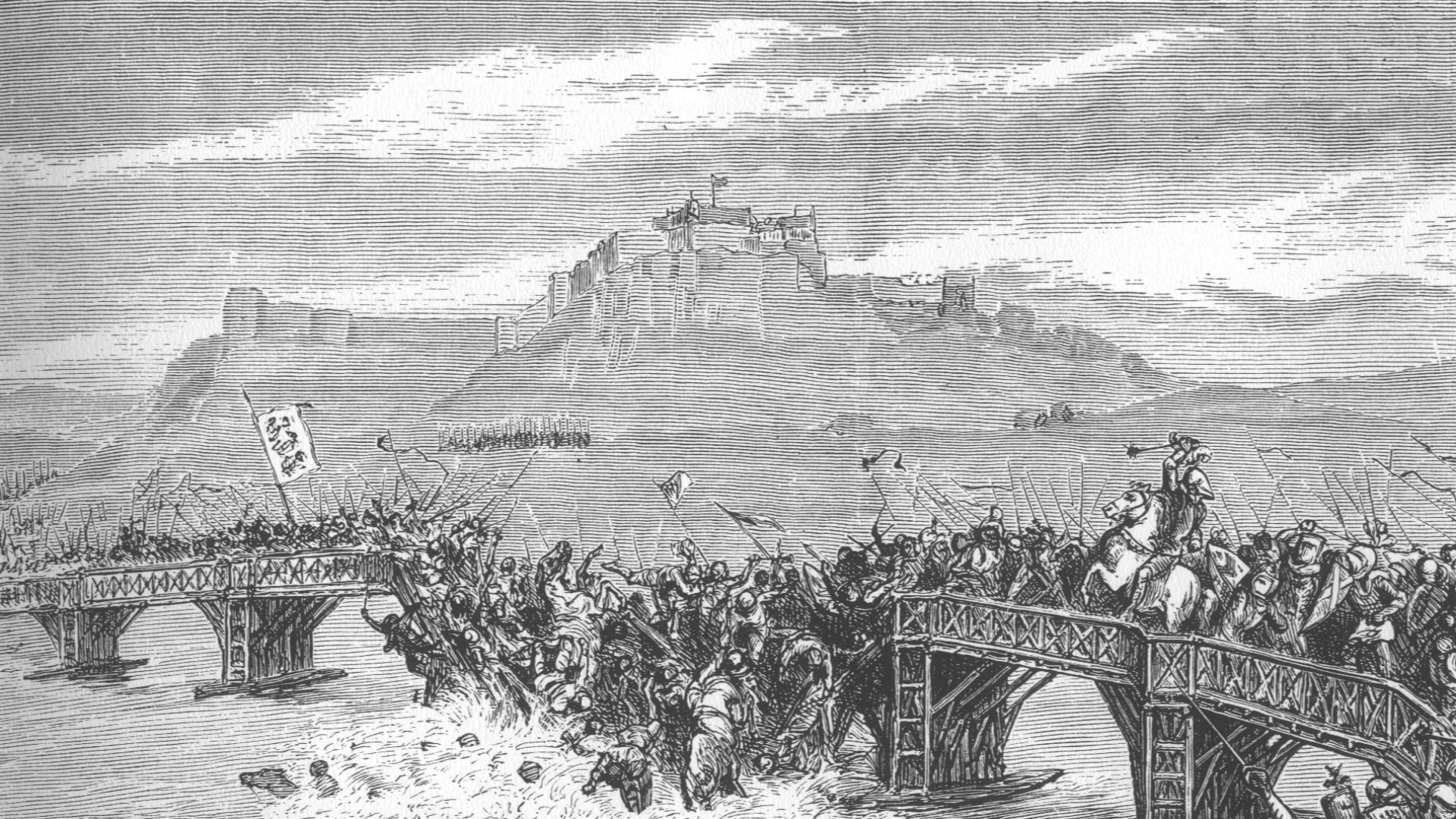 Unknown authorUnknown author, Wikimedia Commons
Unknown authorUnknown author, Wikimedia Commons
13. He Lost His Partner
Victory at Stirling Bridge came at a cost. Though the Scots had triumphed, Andrew Moray suffered wounds during the battle and never recovered. He died later in 1297, robbing the rebellion of one of its sharpest minds and most dedicated leaders. His death left Wallace to carry the cause alone. Moray may not be as famous today, but Scotland’s resistance might never have stood a chance without him. He was the co-architect of a national awakening.
 Braveheart (1995) Trailer #1 | Movieclips Classic Trailers, Rotten Tomatoes Classic Trailers
Braveheart (1995) Trailer #1 | Movieclips Classic Trailers, Rotten Tomatoes Classic Trailers
14. England’s Commander Met A Gruesome End
The English leader didn’t just fall—he met a gruesome end. Following the clash at Stirling Bridge, Hugh de Cressingham, Edward I’s top official and battlefield commander in Scotland, was slain amid the fighting. But Wallace’s forces went even further. Chilling reports suggest his enemies desecrated his remains, using parts of his body to fashion items for their weapons. True or not, the story sent a brutal message: Wallace’s uprising wasn’t just political but fueled by vengeance.
 William Wallace Flayed Hugh Cressingham At The Battle Of Stirling Bridge | Drunk History UK, Comedy Central UK
William Wallace Flayed Hugh Cressingham At The Battle Of Stirling Bridge | Drunk History UK, Comedy Central UK
15. He Levelled Up
Wallace rose to the top, Moray was gone, and Scotland was riding high after Stirling. In late 1297, the nobles named him Guardian of Scotland—a wartime leader acting in the king’s absence. A commoner turned commander, Wallace now spoke on behalf of the nation. He wasn’t just leading troops—he was shaping policy, forging alliances, and defending Scotland’s fragile independence. For a brief, shining moment, a rebel without a title became the most powerful man in the kingdom.
 Hulton Archive, Getty Images
Hulton Archive, Getty Images
16. His Enemy Struck Back
Edward I wasn’t called the “Hammer of the Scots” for nothing—and in 1298, he brought that hammer down hard. Furious over Wallace’s raids, Edward launched a massive invasion, leading his army personally into Scotland. The two sides clashed at the Battle of Falkirk. Though Wallace’s forces fought bravely, English cavalry and archers overwhelmed the Scots. It was a brutal defeat. Wallace escaped with his life, but the tide had turned—and Scotland’s hero was on the run.
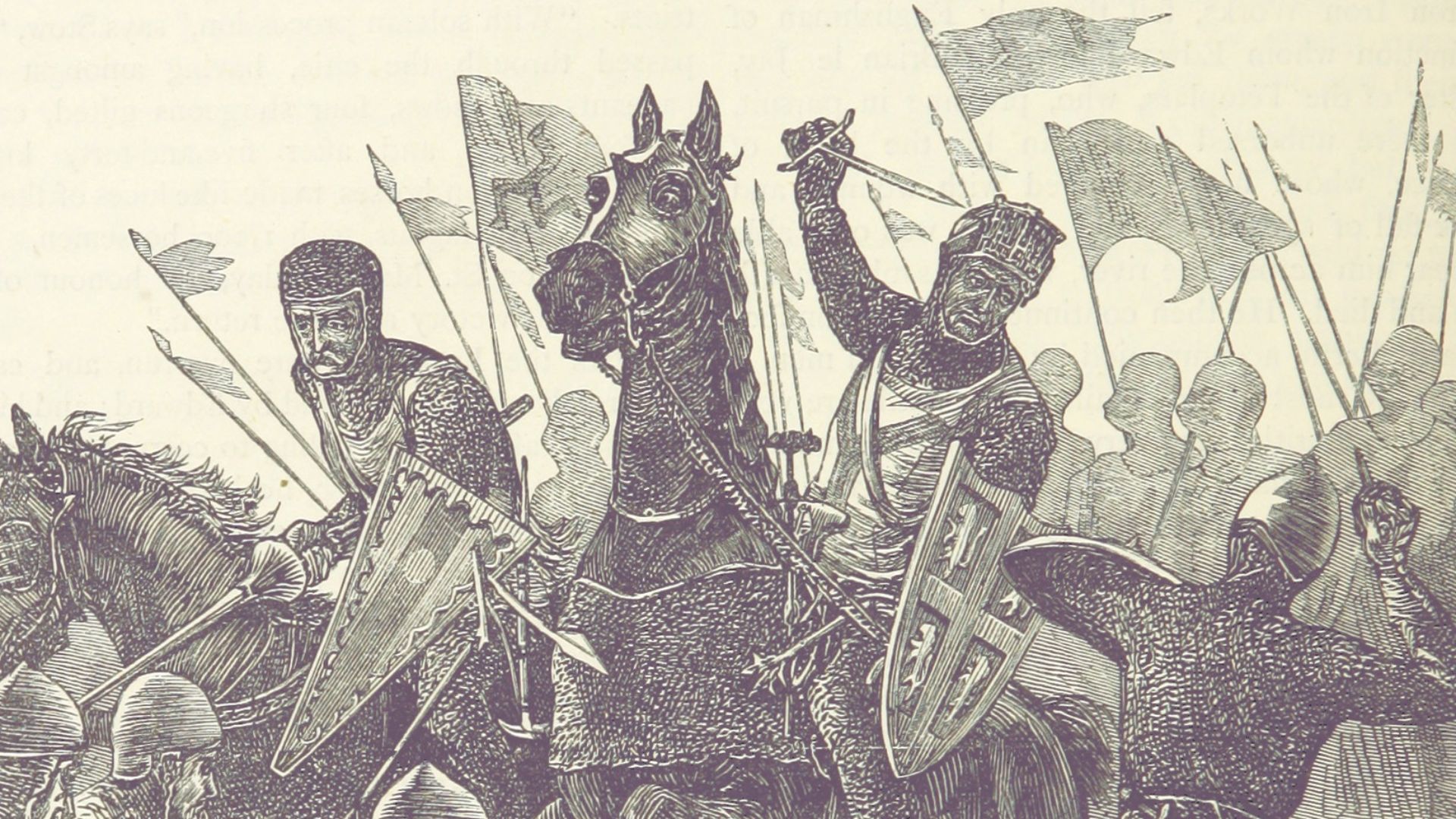 James Grant, Wikimedia Commons
James Grant, Wikimedia Commons
17. He Resigned
After the crushing loss at Falkirk, Wallace made a fateful choice—he stepped down. In 1298, he resigned as Guardian of Scotland, passing leadership to nobles like Robert the Bruce and John Comyn. It wasn’t surrender—it was strategy. Wallace knew the fight had to continue, even if he wasn’t the one leading it. He faded from the political stage but not from the struggle. His sword may have quieted, but his legend had only begun.
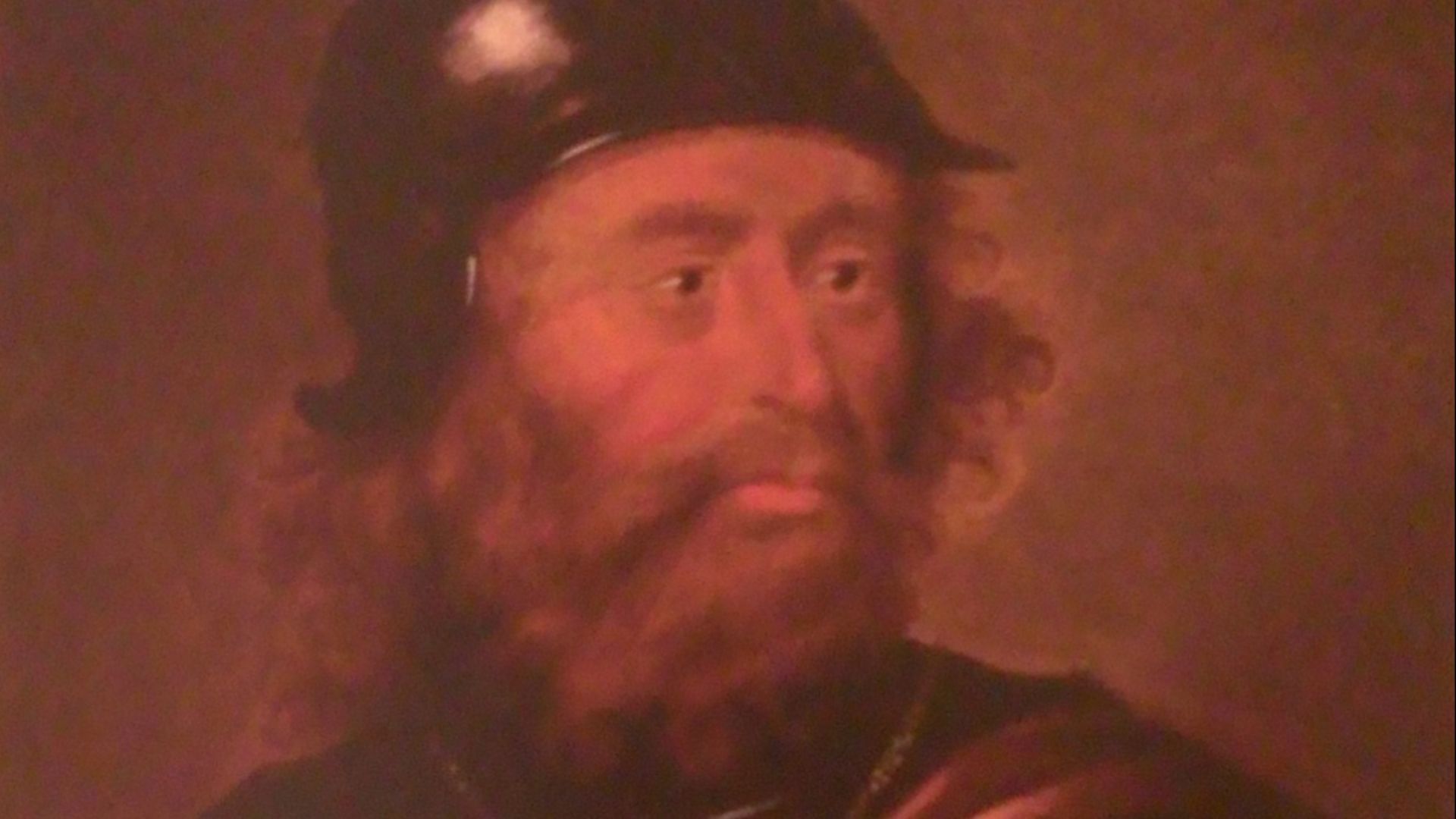 Georgemiller381, Wikimedia Commons
Georgemiller381, Wikimedia Commons
18. He Went Underground
After stepping down as Guardian, Wallace didn’t retire—he vanished into the shadows. For years, his movements were unclear. Some say he traveled to France to plead Scotland’s case to King Philip IV. Others believe he continued guerrilla warfare at home, striking where he could. Whatever the truth, Wallace became more of a symbol than a soldier—a living legend whispered about in both hope and fear. He was no longer at Scotland’s head but still in its heart.
 Hulton Archive, Getty Images
Hulton Archive, Getty Images
19. Scotland’s Leadership Splintered
With Wallace gone from leadership, Scotland’s unity began to crack. Rival nobles Robert the Bruce and John Comyn took over as co-Guardians, but their alliance was uneasy. Personal ambition, conflicting loyalties, and old grudges dragged the resistance into infighting. While Edward I regrouped and pressed forward, Scotland’s leaders were too divided to strike back effectively. Wallace had left the battlefield, but the cause began to drift dangerously off course without him.
 John Comyn Threatens Robert the Bruce at a Sacred Church (Outlaw King, 2018), War Scream on Silver Screen
John Comyn Threatens Robert the Bruce at a Sacred Church (Outlaw King, 2018), War Scream on Silver Screen
20. He Was Betrayed
In 1305, after years in hiding and exile, William Wallace was finally betrayed. Sir John Menteith, a Scottish knight loyal to Edward, captured Wallace near Glasgow. The betrayal stung even deeper because it came from one of his compatriots. Wallace had risked everything for Scotland’s freedom—only to be handed over by a fellow Scot. It was a grim reminder that not all enemies wore English armor… some wore tartan.
 BRAVEHEART (1995) | Wallace is Captured Scene 4K UHD, Cinematico
BRAVEHEART (1995) | Wallace is Captured Scene 4K UHD, Cinematico
21. He Was Considered A Traitor
Wallace’s arrest marked the end of his long resistance. After evading capture for nearly a decade, he was seized and sent to London under heavy guard. To Edward I, Wallace wasn’t a prisoner of war but a traitor. The crown wanted a spectacle, and Wallace’s fate would be a brutal warning to future rebels. But even in chains, Wallace refused to bow. His defiance would echo louder than any English verdict.
 Hulton Archive, Getty Images
Hulton Archive, Getty Images
22. His Trial Was A Farce
Wallace’s trial in London wasn’t about justice—it was pure theater. Hauled before a hostile court in 1305, the English accused Wallace of treason against the English Crown. The court decided the verdict before he even had a chance to speak. The trial wasn’t about proving guilt but making an example. And the punishment would be as brutal as possible.
 Braveheart (30) - William's Trial Scene, Art Of Cinema
Braveheart (30) - William's Trial Scene, Art Of Cinema
23. His Response Was Iconic
When accused of treason during his trial, Wallace delivered a line that echoed through history: “I could not be a traitor, for I never owed him allegiance”. With those words, he didn’t just defend himself but challenged the legitimacy of English rule in Scotland. It was bold, unapologetic, and pure Wallace. He knew he’d die, but he wasn’t about to die quietly. Even in chains, he spoke like a free man.
 Braveheart (30) - William's Trial Scene, Art Of Cinema
Braveheart (30) - William's Trial Scene, Art Of Cinema
24. His Execution Was Brutal
On August 23, 1305, William Wallace met a horrifying end. The English dragged his battered body through the streets of London; he was hanged, drawn, and quartered—a punishment reserved for the worst “traitors”. But instead of silencing rebellion, his execution turned him into a martyr. Wallace died in agony, but the cause he fought for lived on.
 Braveheart: Wallace's execution (HD CLIP), Binge Society
Braveheart: Wallace's execution (HD CLIP), Binge Society
25. They Scattered His Remains
Wallace’s end wasn’t enough for Edward I—he wanted to erase the man and the message. After Wallace’s brutal execution, the English dismembered his body. His head was displayed on a spike atop London Bridge, while the English sent his arms and legs to Newcastle, Berwick, Stirling, and Perth as a warning. But instead of fear, it stirred fury. The English scattered his remains to silence rebellion—yet all they did was scatter the seeds of legend.
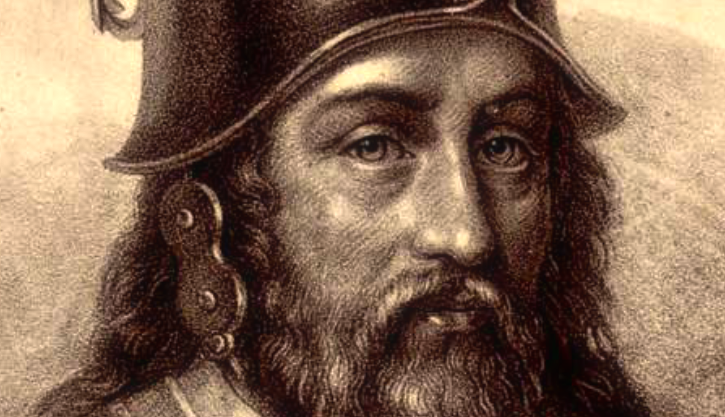 Stevens Coolidge Place Collection, Picryl
Stevens Coolidge Place Collection, Picryl
26. Edward I Never Saw The End
Edward I, the “Hammer of the Scots,” spent years trying to crush Wallace and the rebellion he sparked. But despite his victories, Edward never lived to see the outcome. He died in 1307 while leading a march north and requested that his men carry his bones into battle against the Scots. It never happened. Scotland endured, and Edward's great enemy’s legacy outlasted his own. Wallace fell first, but history remembered who kept fighting.
 Bettmann, Getty Images
Bettmann, Getty Images
27. His Family May Have Paid The Price
After Wallace became an enemy of the crown, the English didn't just target him—they reportedly turned on his family. Some sources claim his father and brothers were executed or killed during the conflict. Whether out of vengeance or strategy, Edward I made sure no part of Wallace's life escaped the consequences of rebellion.
 5 Epic Moments From Braveheart, Binge Society
5 Epic Moments From Braveheart, Binge Society
28. His Legacy Lived On
William Wallace may have died a traitor in the eyes of England, but to Scotland, he became a legend—his courage, defiance, and refusal to submit inspired generations. Songs, poems, and stories kept his memory alive, turning a rebel into a national symbol of freedom. Centuries later, his legacy would echo in the Declaration of Arbroath—and beyond. Wallace didn’t live to see Scotland free, but he lit the fire that never truly went out.
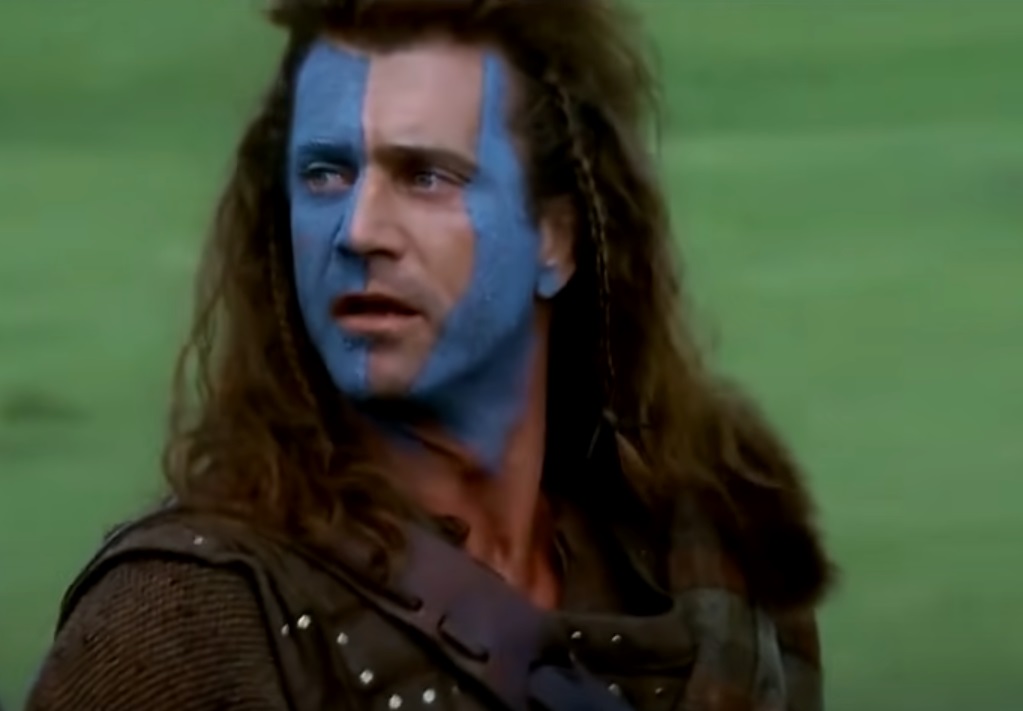 Twentieth Century, Braveheart (1995)
Twentieth Century, Braveheart (1995)
29. His Formal Rival Took The Torch
After Wallace’s death, the fight didn’t end—it evolved. Robert the Bruce, once Wallace’s political rival, took up the cause. In 1306, Bruce crowned himself King of Scots and began a brutal campaign to reclaim Scotland’s independence. Unlike Wallace, Bruce played the long game—fighting battles, making alliances, and building momentum. His defining victory came in 1314 at Bannockburn. What Wallace started in blood and fire, Bruce carried forward with strategy—and finally, success.
 Outlaw king,2018, Sigma Films
Outlaw king,2018, Sigma Films
30. He Influenced Scotland's Comeback
In 1320, Scotland made its boldest statement yet. The Declaration of Arbroath, a letter to Pope John XXII, declared Scotland’s independence and defended Robert the Bruce’s right to rule. More than just politics, it spoke of freedom as a God-given right—“for it is not glory, it is not riches, it is not honors, but freedom alone that we fight for.” Wallace’s spirit echoed through every line. His rebellion laid the foundation—this was Scotland’s voice.
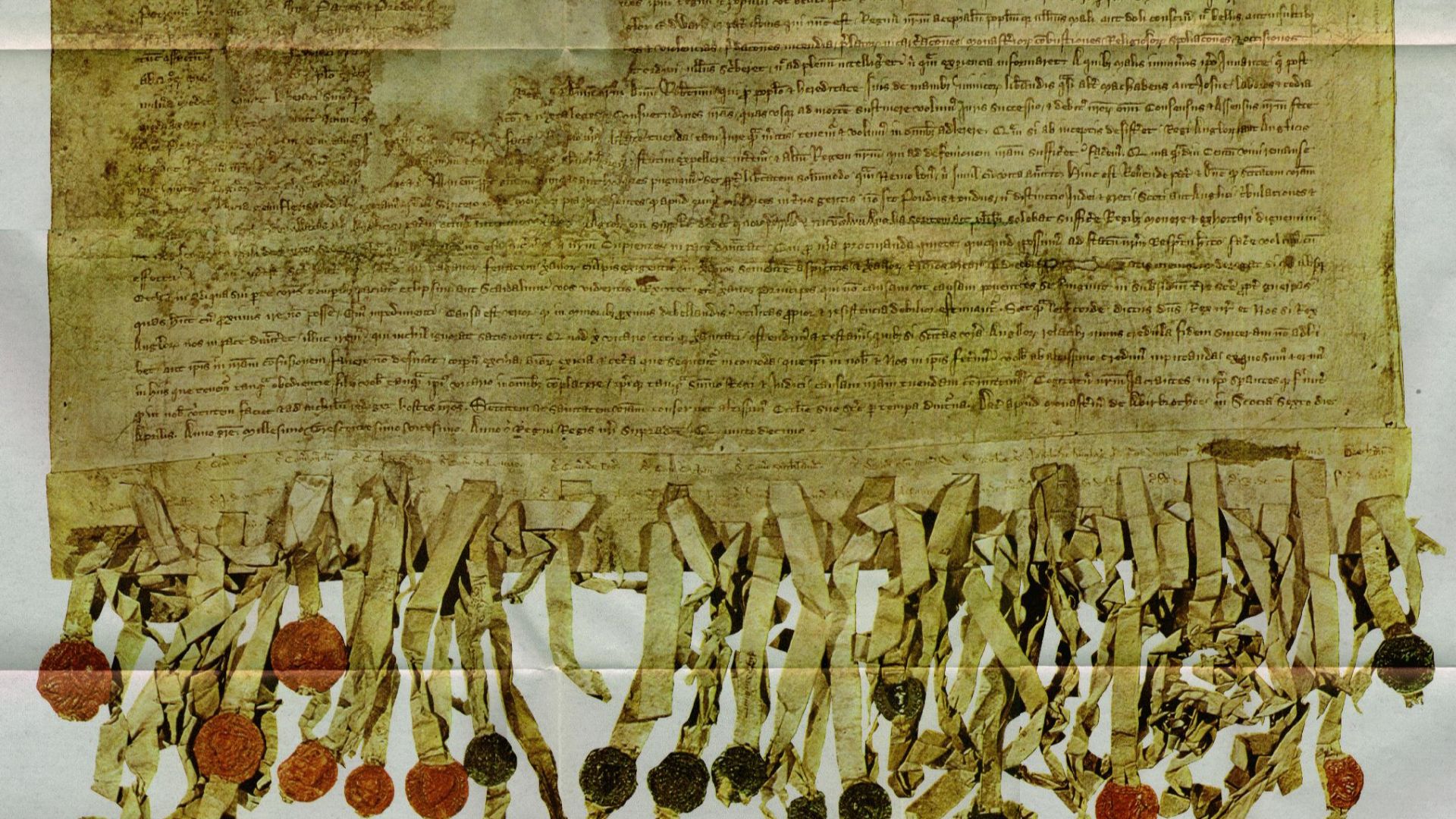 Scotland barons, Wikimedia Commons
Scotland barons, Wikimedia Commons
31. His Dream Came True
After decades of war, bloodshed, and rebellion, Scotland finally earned its freedom—on paper. In 1328, the Treaty of Edinburgh–Northampton marked a huge victory: England formally recognized Robert the Bruce as King of Scots and acknowledged Scotland’s independence. It was the moment Wallace had dreamed of, though he never lived to see it. The battles were brutal, the politics messy, but Scotland had reclaimed its crown—and proved it could stand on its own.
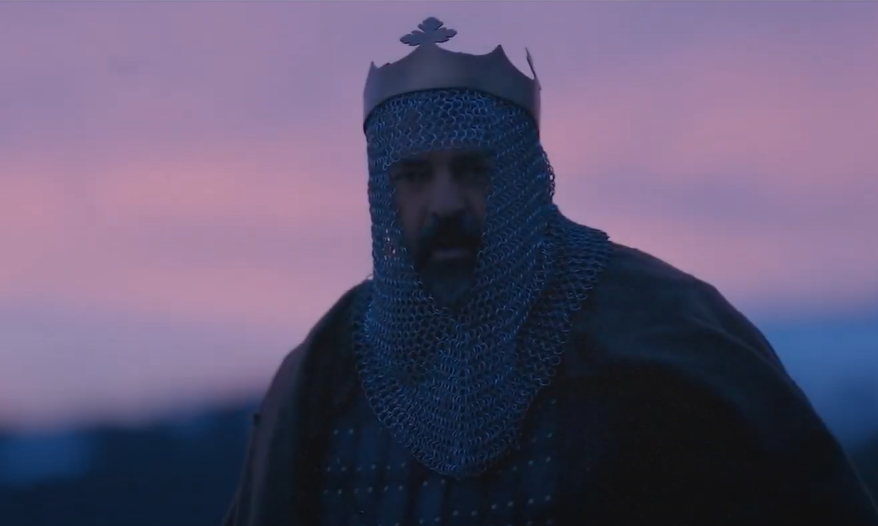 Yellow Bricks Films, Robert the Bruce (2020)
Yellow Bricks Films, Robert the Bruce (2020)
32. He Became A Symbol Of Defiance
Long after his execution, Wallace’s name became a rallying cry for future generations. During the Jacobite risings of the 18th century, rebels invoked Wallace as a symbol of Scottish defiance. Centuries later, independence movements continued to draw inspiration from his legacy. He wasn’t just a figure from the past, he was a living idea: freedom at all costs. Wallace’s name echoed like a battle cry across the Highlands in every rebellion and protest—and it went farther than you think.
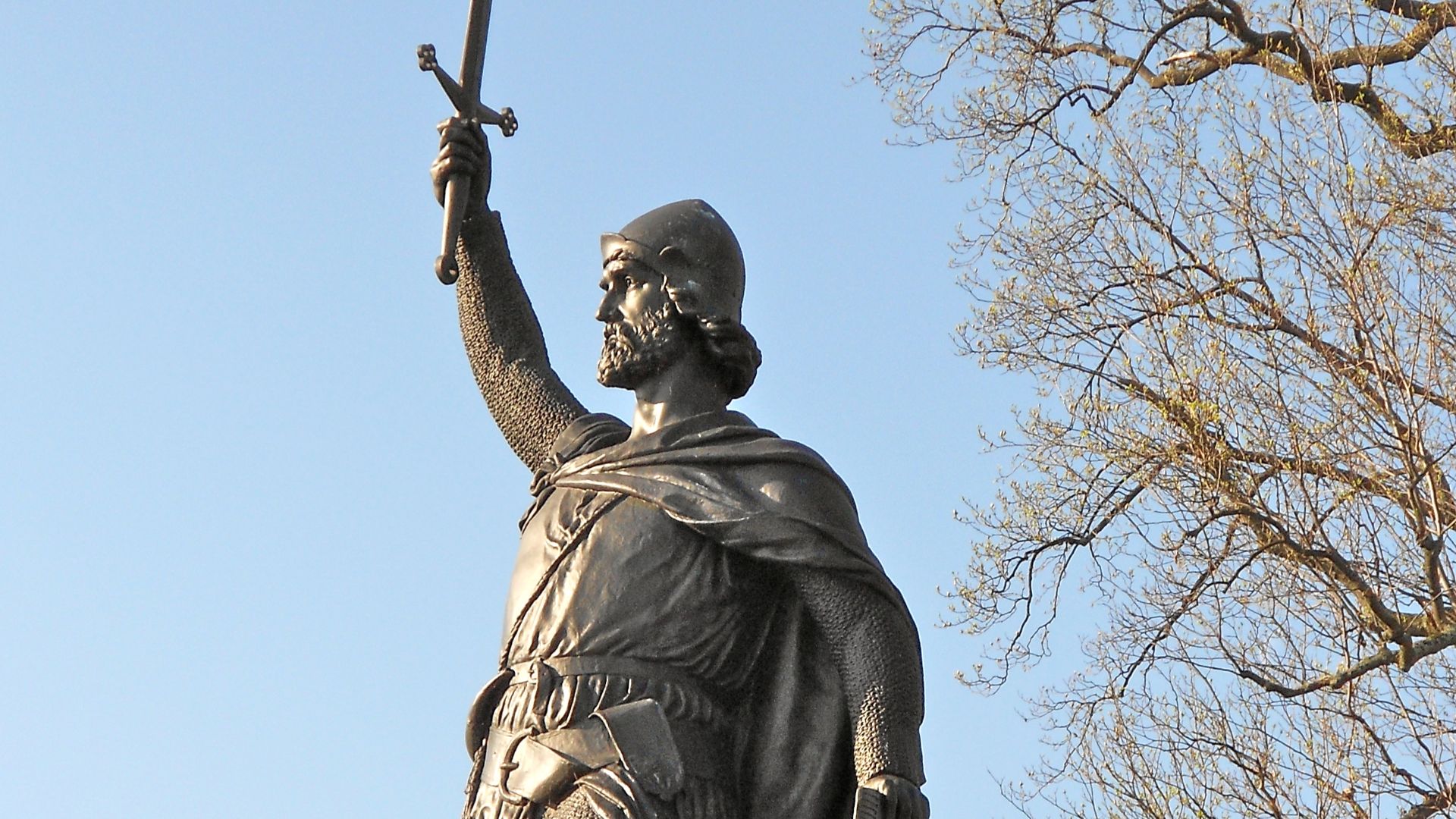
33. He Inspired Revolutions
William Wallace's defiance didn't stop at the Scottish border. His story—of a man rising against tyranny—echoed through history and across continents. Enlightenment thinkers, revolutionaries, and freedom fighters saw in Wallace a timeless symbol of resistance. From the American Revolution to modern independence movements, his legend inspired those who believed liberty was worth any cost. He wasn't just a Scottish hero—he became an icon for anyone willing to fight for freedom against the odds.
But it was actually one particular work of art that made him legendary.
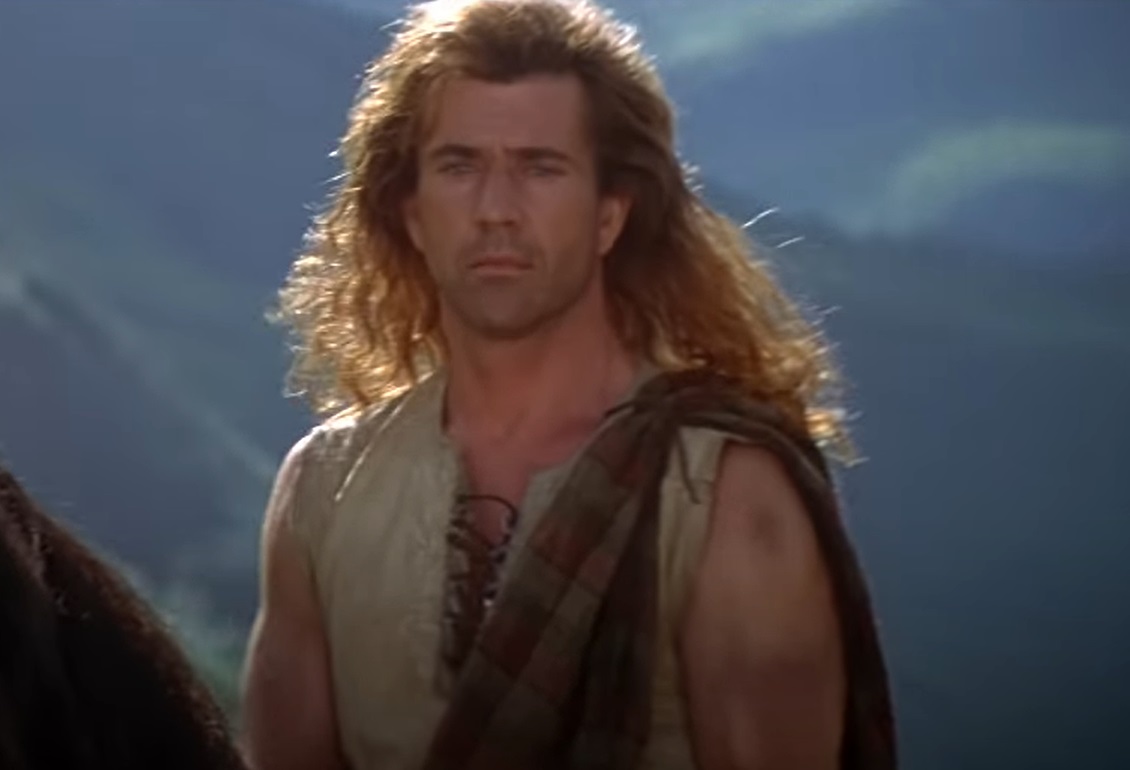 Paramount, Braveheart (1995)
Paramount, Braveheart (1995)
34. He Became A Legend
Long before Braveheart, it was Blind Harry who turned Wallace into a legend. In the 15th century, this wandering poet wrote The Wallace, an epic poem that portrayed Wallace as a larger-than-life hero—slaying thousands, outwitting kings, and fighting dragons (yes, really). While the facts are wildly exaggerated, the impact was real. For centuries, The Wallace shaped how Scots saw their hero. It wasn't history—it was mythmaking. And it kept Wallace's fire burning through the ages.
 The Wallace by Blind Harry, Claire Casey - Writer
The Wallace by Blind Harry, Claire Casey - Writer
35. He Was A Scottish Hero
Blind Harry's The Wallace wasn't just popular but a sensation. It was one of Scotland's most widely read texts for centuries, second only to the Bible. Its stirring verses painted Wallace as the ultimate patriot and freedom fighter, fueling national pride and anti-English sentiment for generations. Even Robert Burns admired it. Though more folklore than fact, the poem shaped how Scots remembered their hero—and helped ensure Wallace's name never faded into obscurity.
But the poem was just the beginning. Scotland's respect for Wallace was so great—they went to extreme lengths to show it.
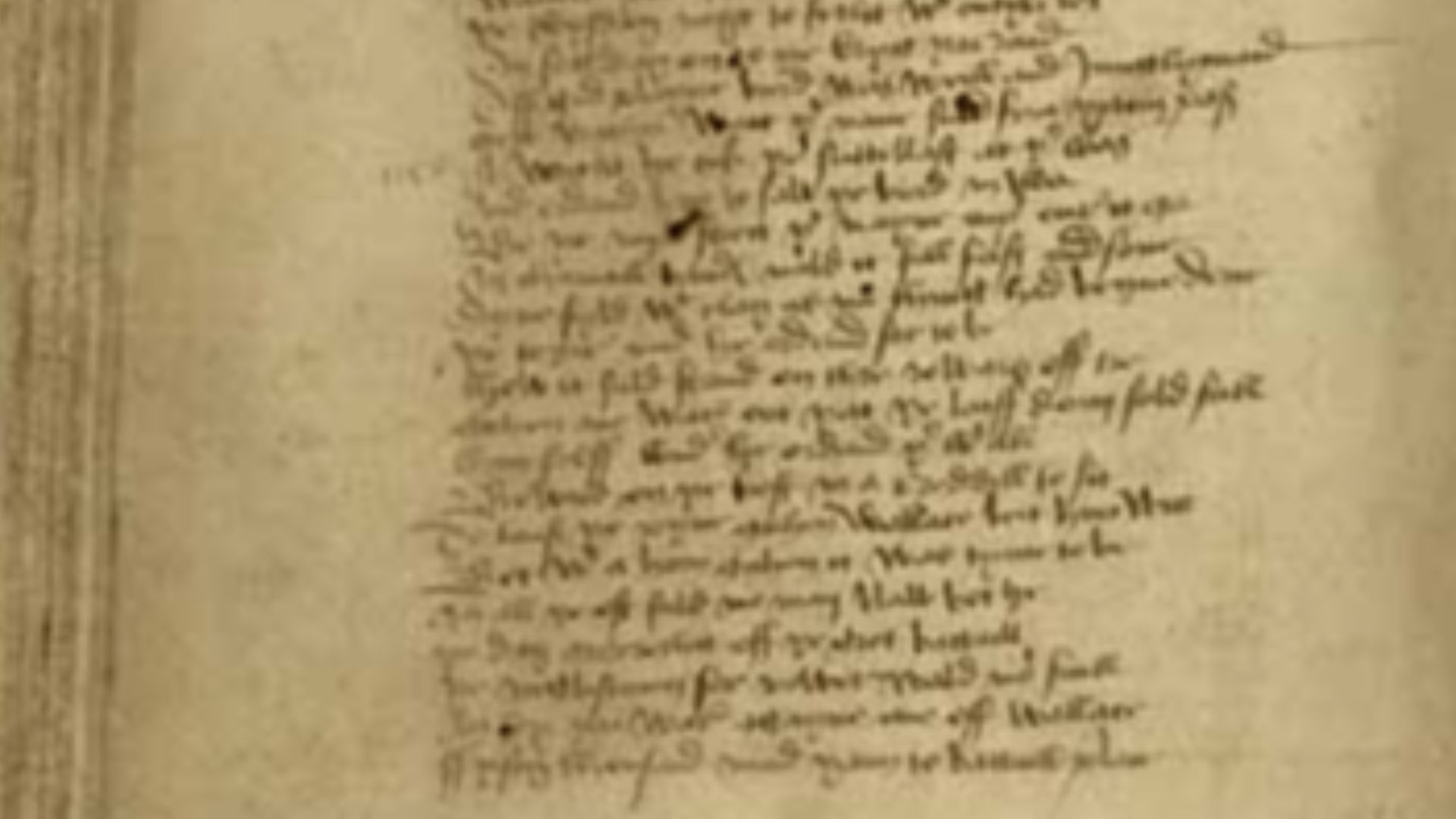 The National Library Of Scotland, Wikimedia Commons
The National Library Of Scotland, Wikimedia Commons
36. He Became Stirling's Famous Landmark
Centuries after his death, Scotland continued to ensure the world will never forget William Wallace. In 1814, Scotland built a large, sandstone statue of Wallace in Bemersyde. And then they went on to build another, and another, and another—eventually embellishing Scottish soil with over 20 Wallace monuments. But the most popular tribute now stands as Stirling's famous landmark—and with good reason.
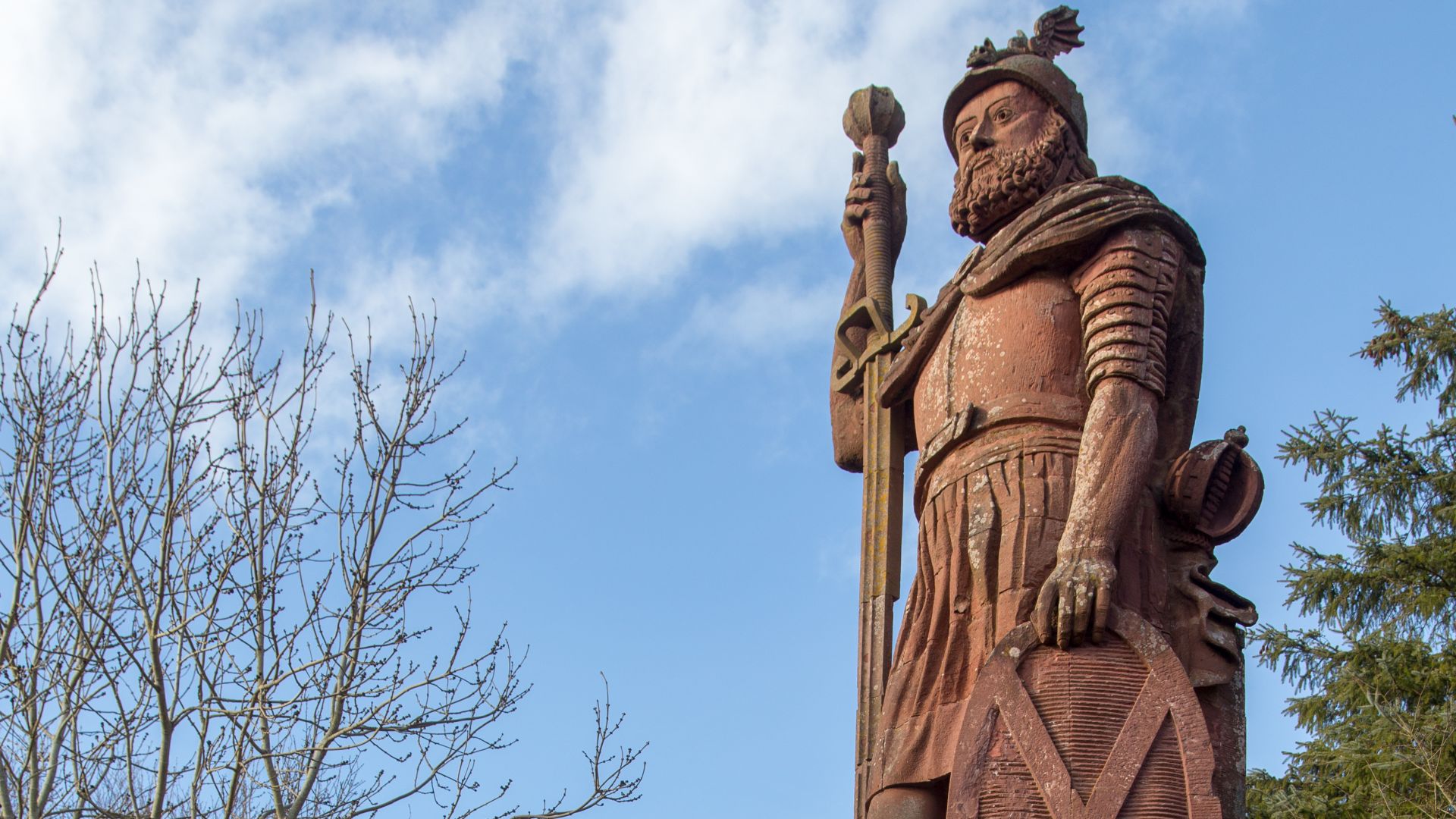 Tom Parnell, Wikimedia Commons
Tom Parnell, Wikimedia Commons
37. It Takes You Back In Time
Scotland's National Wallace Monument is a towering Gothic spire near Stirling, built in the 19th century. Rising over 200 feet high, it commemorates the man who defied an empire. The tower took 8 years to build and it's location was carefully chosen. Officials apparently chose the exact spot where Wallace watched the gathering of the army of King Edward just before the infamous Battle of Stirling Bridge in 1297, transporting tourists back to a revolutionary moment in time.
If its iconic location isn't enough, the inside of the tower gets even better.
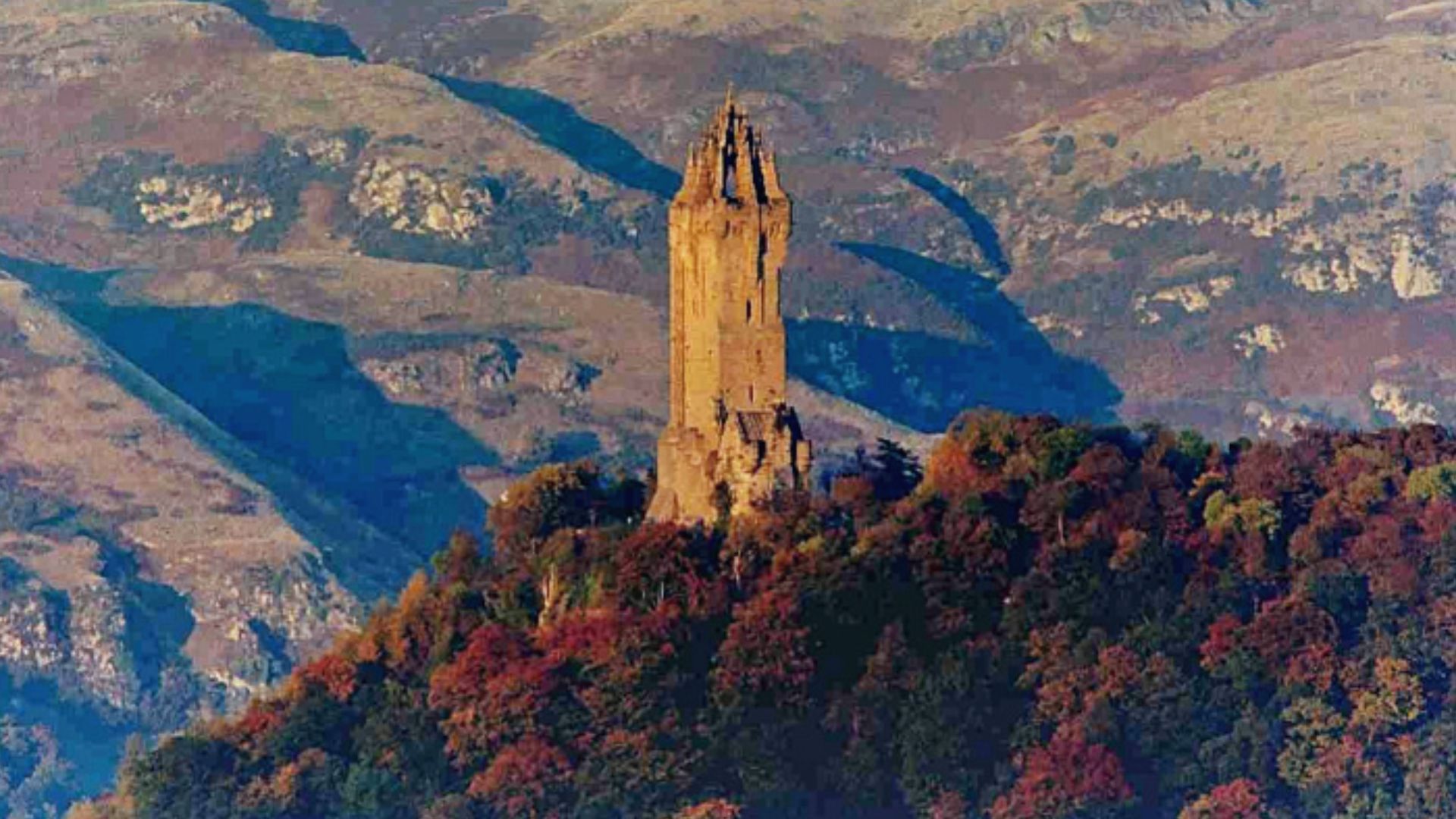 Ray Mann, Wikimedia Commons
Ray Mann, Wikimedia Commons
38. His Sword Still Stands
One relic draws crowds more than any other inside the Wallace Monument: his sword. It's an imposing weapon nearly five-and-a-half feet long—one that seems more myth than metal. Though historians debate whether it truly belonged to Wallace, the symbolism is powerful. It represents strength, rebellion, and the weight of a nation's hope. Whether fact or legend, that sword still speaks to every visitor who gazes at its towering, battle-worn blade.
And there isn't a Scot in the world that doesn't know his name.
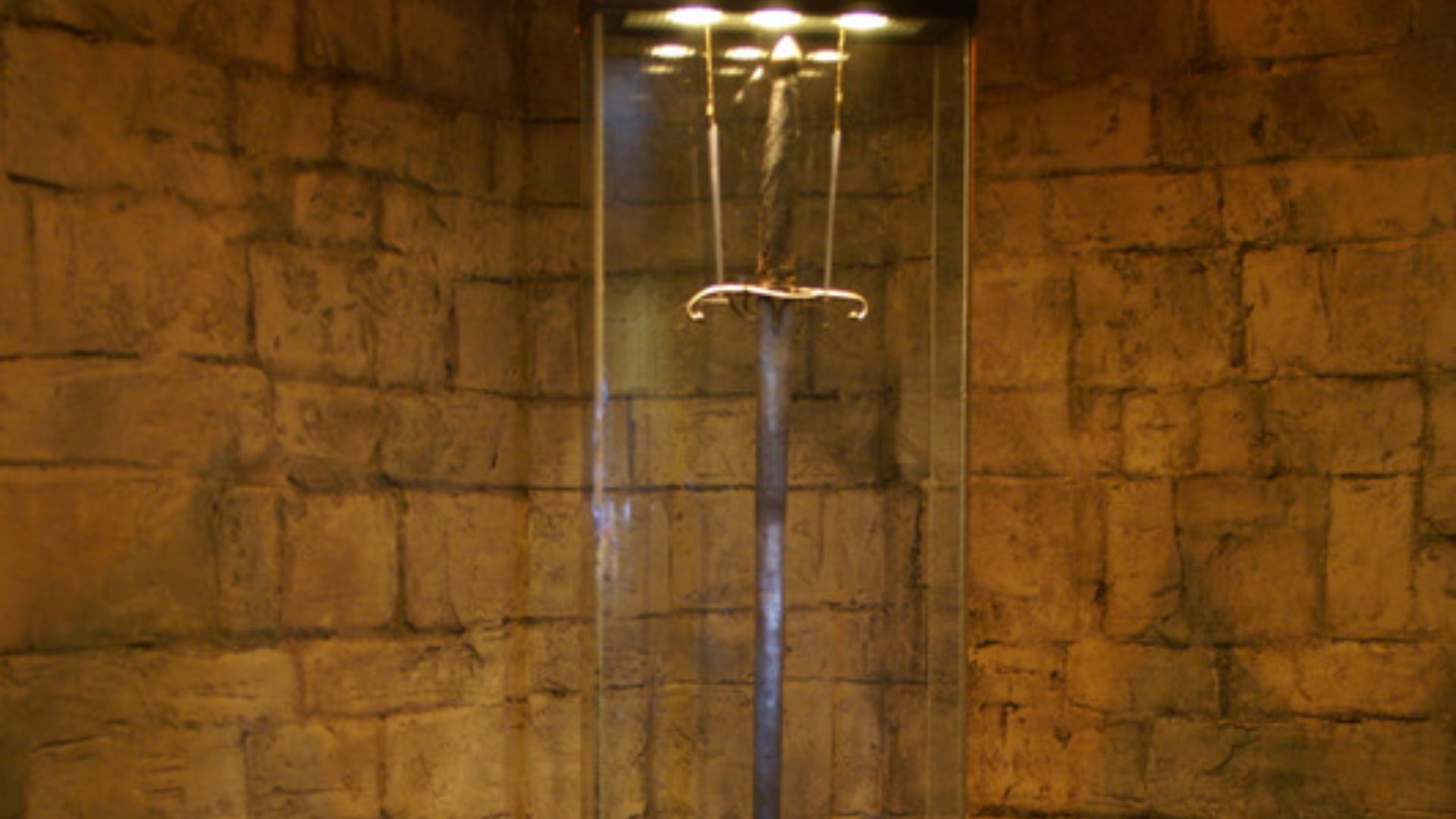
39. Memory, Myth, And National Pride
Wallace's story lives on in more than monuments—it is woven into Scotland's identity. Schoolchildren learn his name, artists depict his battles, and political movements invoke his courage. Though time has blurred fact and myth, Wallace endures as a symbol of what Scotland values most: independence, resilience, and fierce pride. From the battlefield to the ballot box, his legacy still shapes the spirit of a nation that remembers—and refuses to kneel.
In fact, even America felt compelled to tell his story.
 Bolgwrad, CC BY-SA 3.0, Wikimedia Commons
Bolgwrad, CC BY-SA 3.0, Wikimedia Commons
40. He Made It To Hollywood
In 1995, Mel Gibson's Braveheart stormed into theaters and turned William Wallace into a global icon. The film portrayed him as a fearless warrior in face paint, screaming for "freedom!" while leading Scotland into battle. Historical accuracy? Not so much. But emotional impact? Off the charts. Braveheart swept the Oscars, ignited interest in Scottish history, and reintroduced Wallace to a new generation—one tear-soaked monologue at a time.
The film was a box office hit and critical success—but one particular audience group found something utterly shocking about it all.
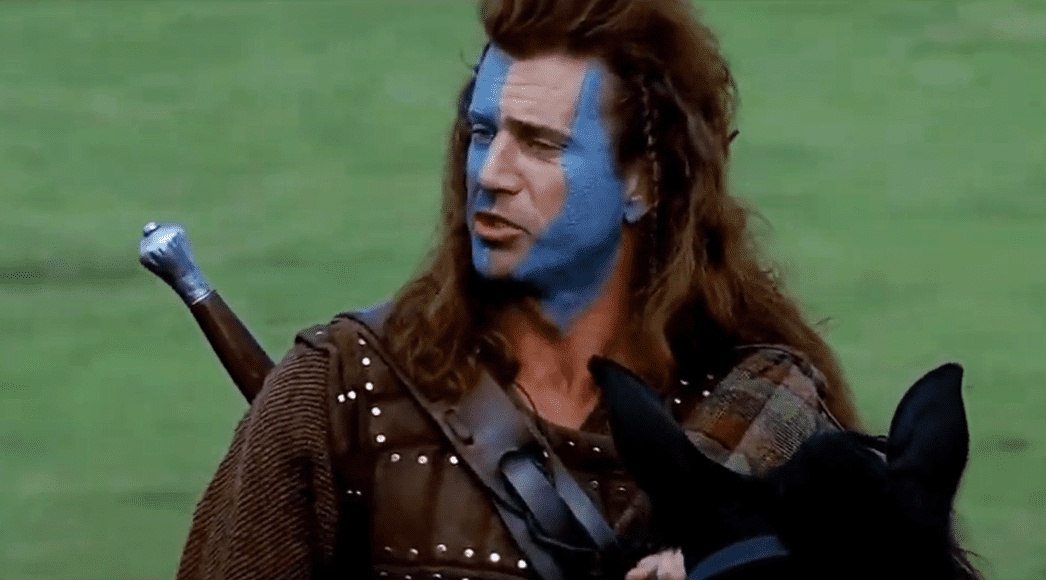 Braveheart, Paramount Pictures
Braveheart, Paramount Pictures
41. It Was Wildly Inaccurate
Historians cringed at Braveheart's timeline and wardrobe—Wallace didn't wear kilts or blue paint and wasn't a poor farmer. But facts aside, the film worked. It captured the spirit of rebellion and gave audiences a hero to cheer for. It wasn't about getting every detail right but honoring the myth. And that myth, messy or not, sparked a worldwide fascination with Wallace and Scotland's centuries-old struggle for independence.
In fact, the film had a much bigger impact than anyone would have imagined.
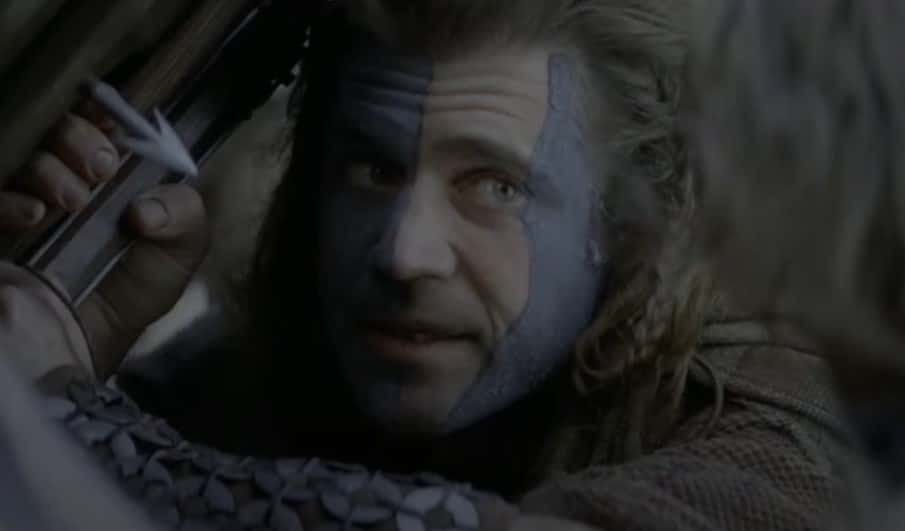 Braveheart (1995), Paramount Pictures
Braveheart (1995), Paramount Pictures
42. Tourism And Patriotism Surged
After Braveheart, Wallace wasn't just a historical figure—he was a national brand. Scottish tourism exploded as fans flocked to castles, battlefields, and the Wallace Monument. Souvenirs, statues, and slogans all helped to capture the newfound hype. He's appeared in novels, documentaries, video games, and even comic books—always defiant, always larger than life.
 Elden Ring | William Wallace - Braveheart | Really Bad Builds And Cosplay, Golem Gaming
Elden Ring | William Wallace - Braveheart | Really Bad Builds And Cosplay, Golem Gaming
43. It Stirred National Pride
More than that, the film stirred national pride, echoing in speeches, rallies, and even politics. For many Scots, Wallace's call for freedom felt as powerful in the 1990s as it had in the 1290s.
But amongst all the knickknacks and novelties, there's one genuine artifact left directly linked to Wallace himself—and it's absolutely priceless.
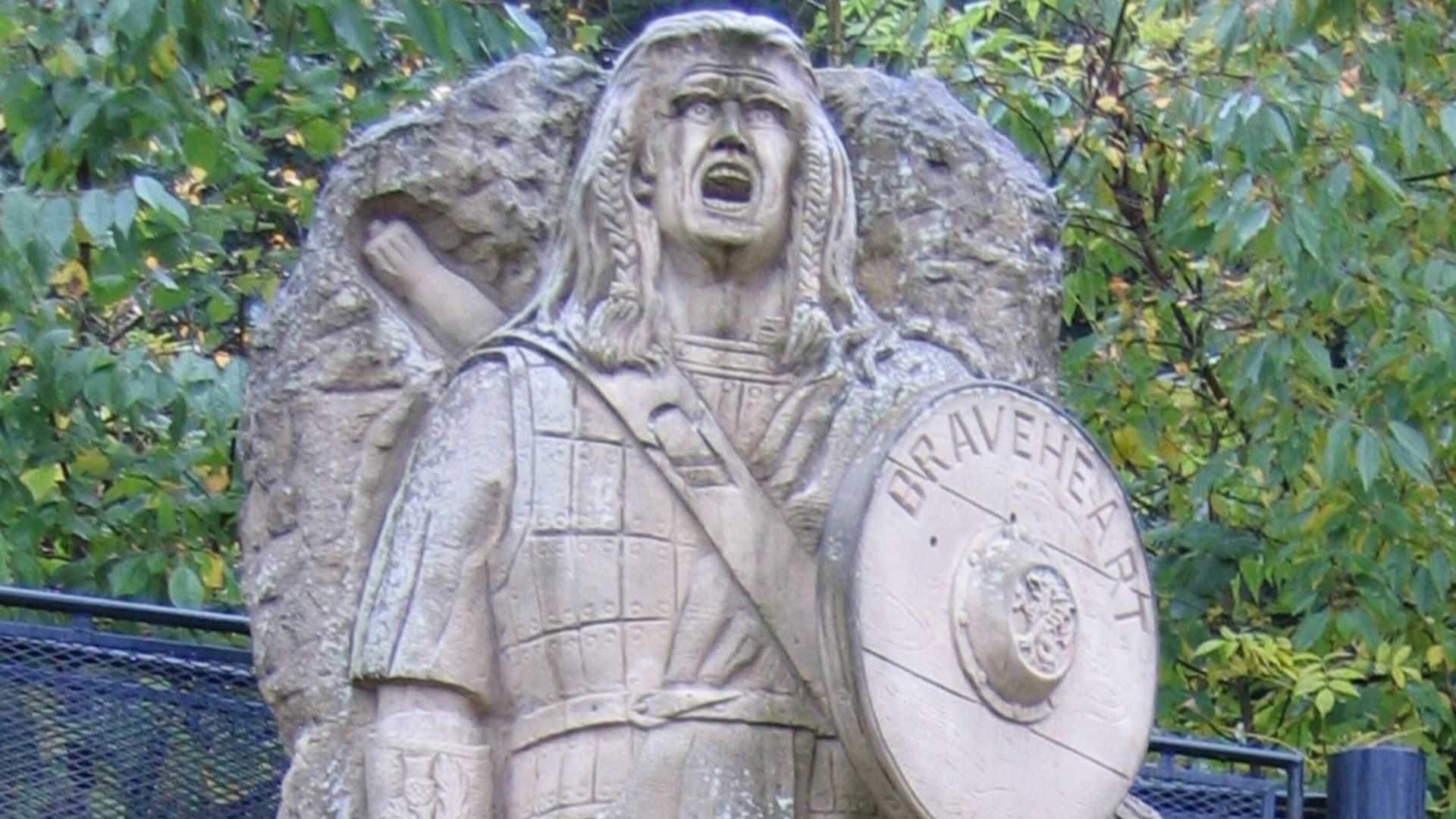
44. A Significant Piece Of Historical Evidence
Incredibly, Wallace left behind a physical trace: a wax seal attached to a letter he co-signed in 1297, sent to Lübeck and Hamburg to promote trade. The seal shows a bow and arrow—unusual for a noble but fitting for a guerrilla fighter. It's one of the few surviving artifacts directly linked to Wallace himself. He made it clear even in diplomacy: Scotland was still in the game.
As exciting as the seal is to historians, the public found something else claimed by Wallace that blows everything else out of the water.
 Andrew Roberts, CC BY-SA 4.0, Wikimedia Commons
Andrew Roberts, CC BY-SA 4.0, Wikimedia Commons
45. The Wallace Oak—A Rebel's Refuge?
Legend says Wallace once hid in the branches of a massive tree—the Wallace Oak—to escape English pursuers. The tree stood in Elderslie for centuries, growing as the legend did. By the 1800s, it was so famous that people took chunks as souvenirs. Though the original oak fell in the 1850s, its roots in folklore remain strong—a symbol of resistance that has been carved into the land.
We may know how he signed his letters, and where he hid from enemies—but there's one very important detail about Wallace that we actually don't know.
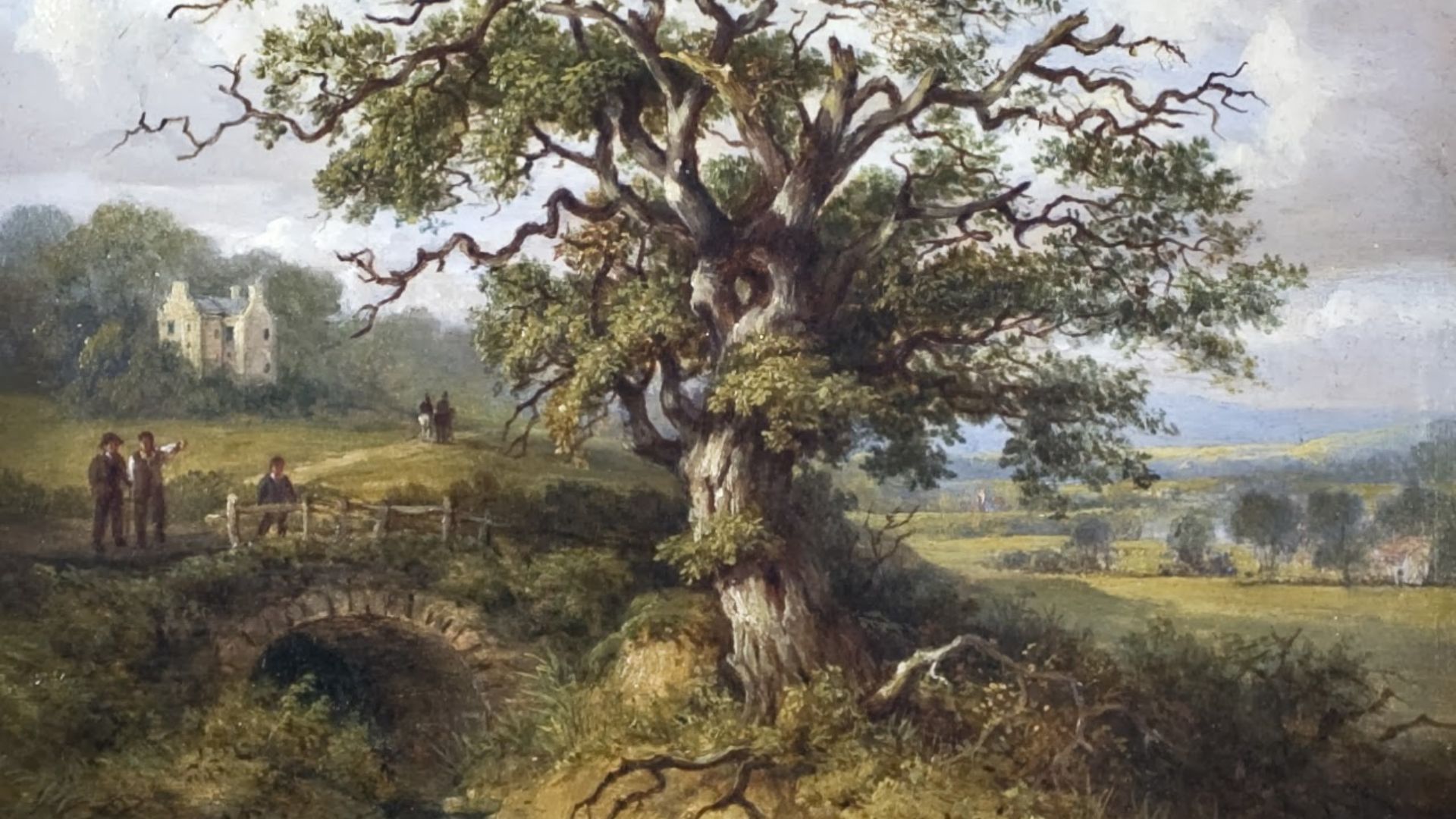 Jane Nasmyth, Wikimedia Commons
Jane Nasmyth, Wikimedia Commons
46. His Physical Identity Is A Mystery
Believe it or not, we don't know what William Wallace actually looked like. No portraits, and no descriptions from his lifetime survive. Hollywood gave us Mel Gibson's version, but the real man remains faceless. Some imagine a towering figure; others picture someone lean and sharp-eyed. In truth, Wallace's image has always been more about attitude than appearance: fierce, proud, and unbowed.
One thing we do know though, is that there was more to Wallace than just muscle—and he may have had an early influence to thank for that.
![Gettyimages - 959868046, William Wallace William Wallace', circa 1270-1305, (circa 1880). Sir William Wallace (circa 1270- 23 August 1305) was a Scottish knight who became one of the main leaders during the Wars of Scottish Independence in the late 13th and early 14th centuries. From British Battles on Land and Sea, Vol. I, by James Grant. [Cassell Petter & Galpin, London, Paris & New York, circa 1880]. (Colorised black and white print). Artist Unknown.](https://www.factinate.com/storage/app/media/factinate/2025/5/14/20.jpg) Print Collector, Getty Images
Print Collector, Getty Images
47. He Was Educated By Monks
Wallace wasn't just muscle—he was reportedly fluent in Latin and well-educated for his time. Some historians believe monks may have taught him, possibly at Paisley Abbey. That education gave him the tools to lead, negotiate, and write letters that still survive. The sword made him feared, but the pen gave his cause legitimacy.
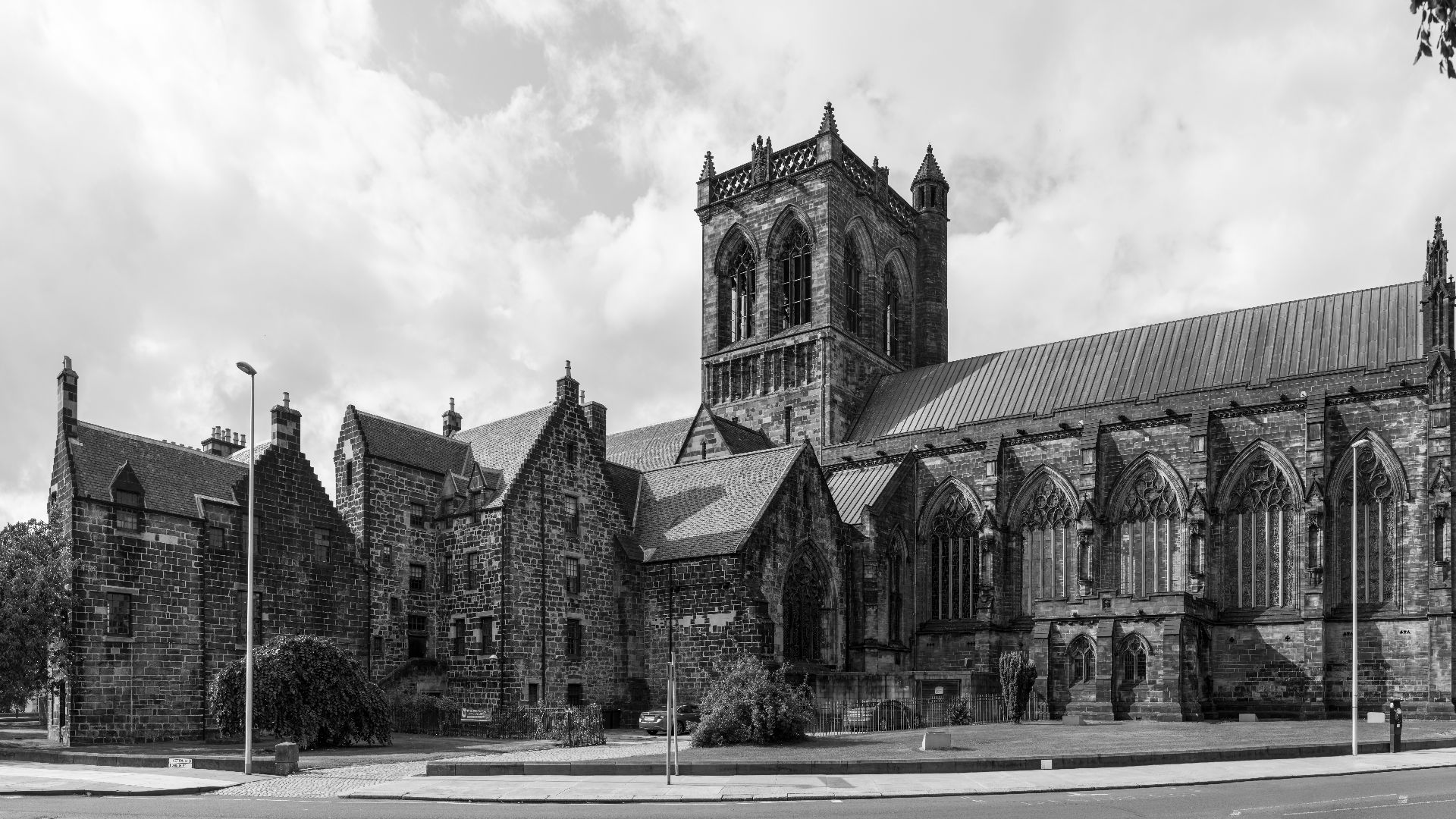 Colin, Wikimedia Commons
Colin, Wikimedia Commons
48. He Stands As A Global Symbol Of Resistance
From Che Guevara murals to Wallace statues in Scotland, freedom fighters worldwide draw strength from his story. His tale resonates in places far beyond Stirling Bridge—wherever people feel the boot of oppression, Wallace's name appears. He's not just part of Scottish history—he's part of the global language of rebellion.
But there's one major thing Hollywood's version of his story fails to portray correctly.
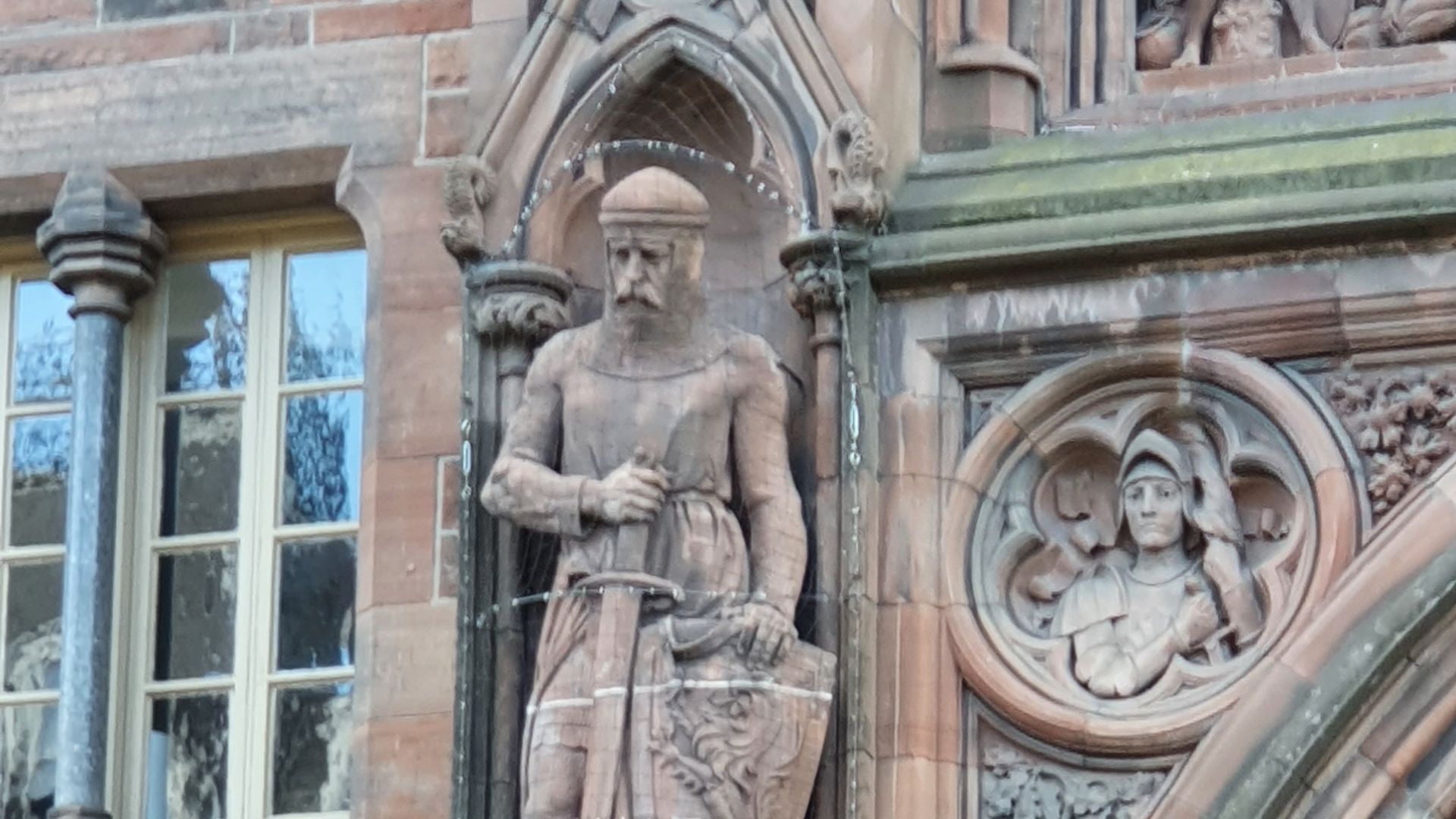 Yair Haklai, Wikimedia Commons
Yair Haklai, Wikimedia Commons
49. Freedom Wasn't His Last Word—But It Might As Well Have Been
Sadly, there's no record of Wallace shouting "Freedom!" before his execution—that was Hollywood. But the myth stuck because it felt true. Whether he said it or not, his entire life screamed it. He gave Scotland something England couldn't take in death: a rallying cry. And over 700 years later, people still haven't stopped shouting it.
 Braveheart: Wallace's execution (HD CLIP), Binge Society
Braveheart: Wallace's execution (HD CLIP), Binge Society
50. William Wallace: The Man Who Wouldn't Kneel
William Wallace began as a shadowy figure—possibly a commoner, certainly an outsider. But he changed the course of Scottish history through courage, cunning, and relentless defiance. Wallace didn't fight for power or titles—he fought for freedom. Though he died brutally, his spirit lived on in battles, declarations, and legends. Wallace wasn't just a warrior—he became a symbol. And centuries later, Scotland still remembers the man who wouldn't kneel.
 Braveheart: William Wallace Freedom Speech [Full HD], Speeches HD
Braveheart: William Wallace Freedom Speech [Full HD], Speeches HD
You May Also Like:
Heroic Facts About Robert the Bruce
Matilda Of Scotland Played A Wicked Game Of Thrones
Sources: 1, 2, 3, 4, 5, 6, 7, 8, 9, 10, 11, 12, 13